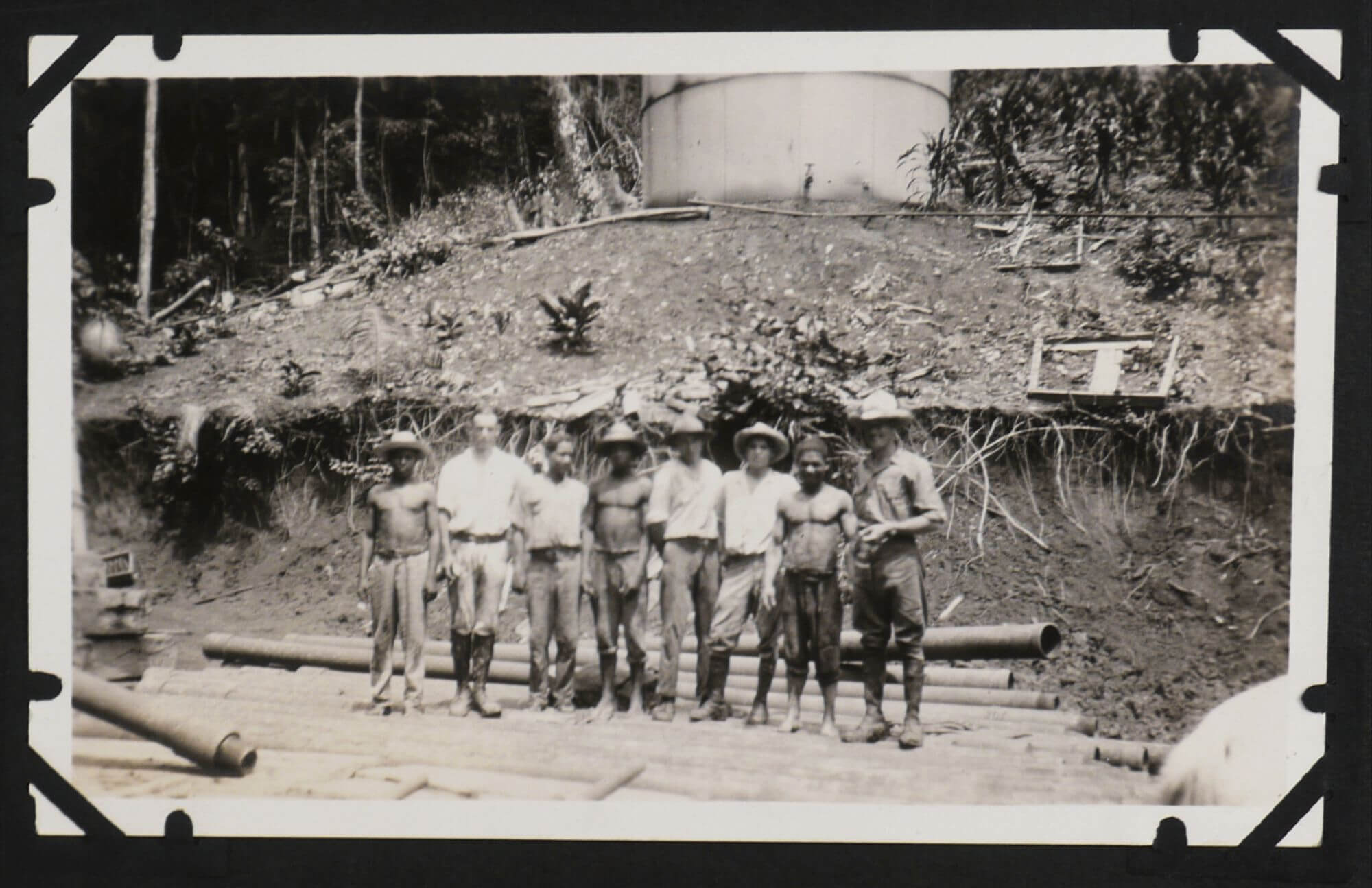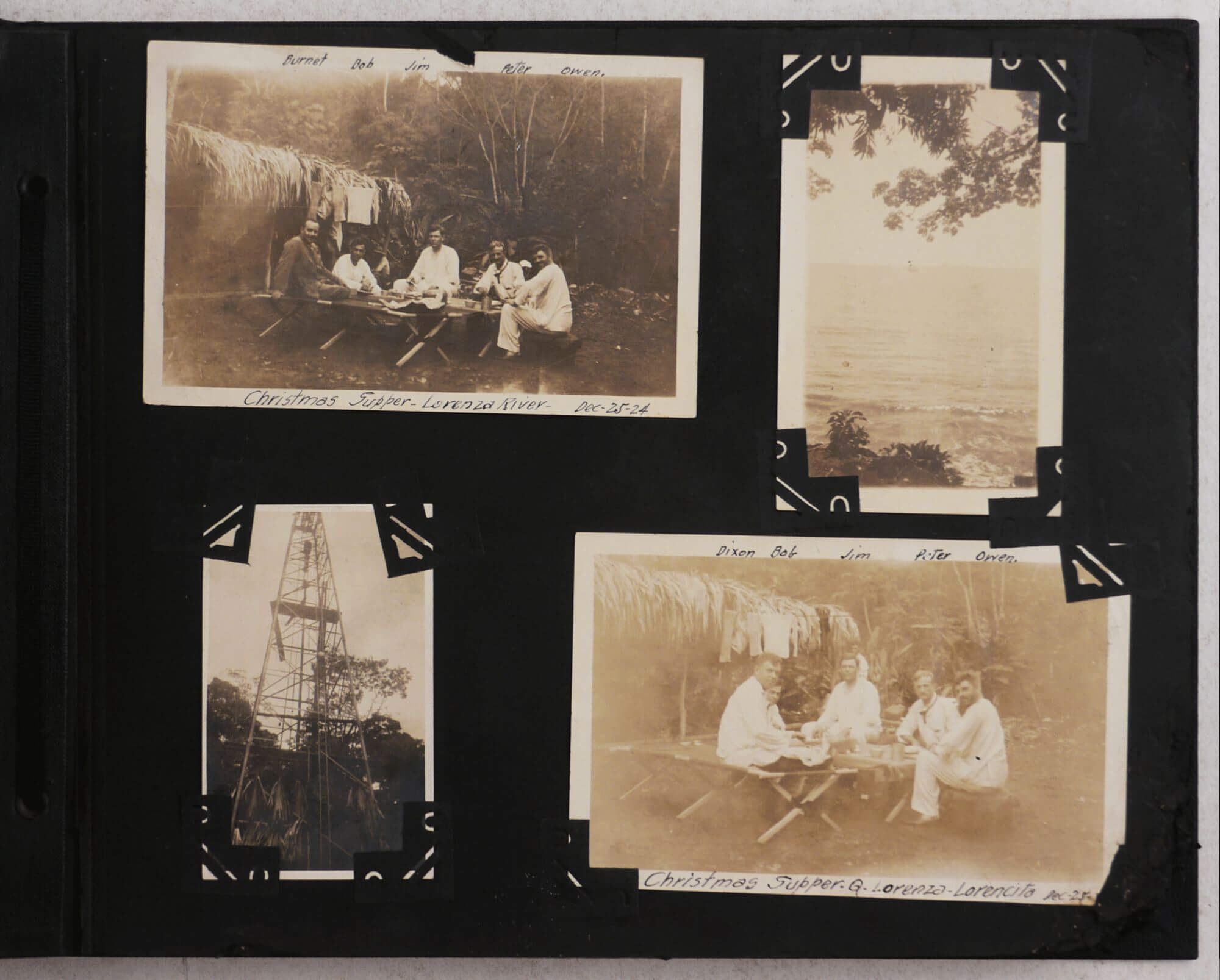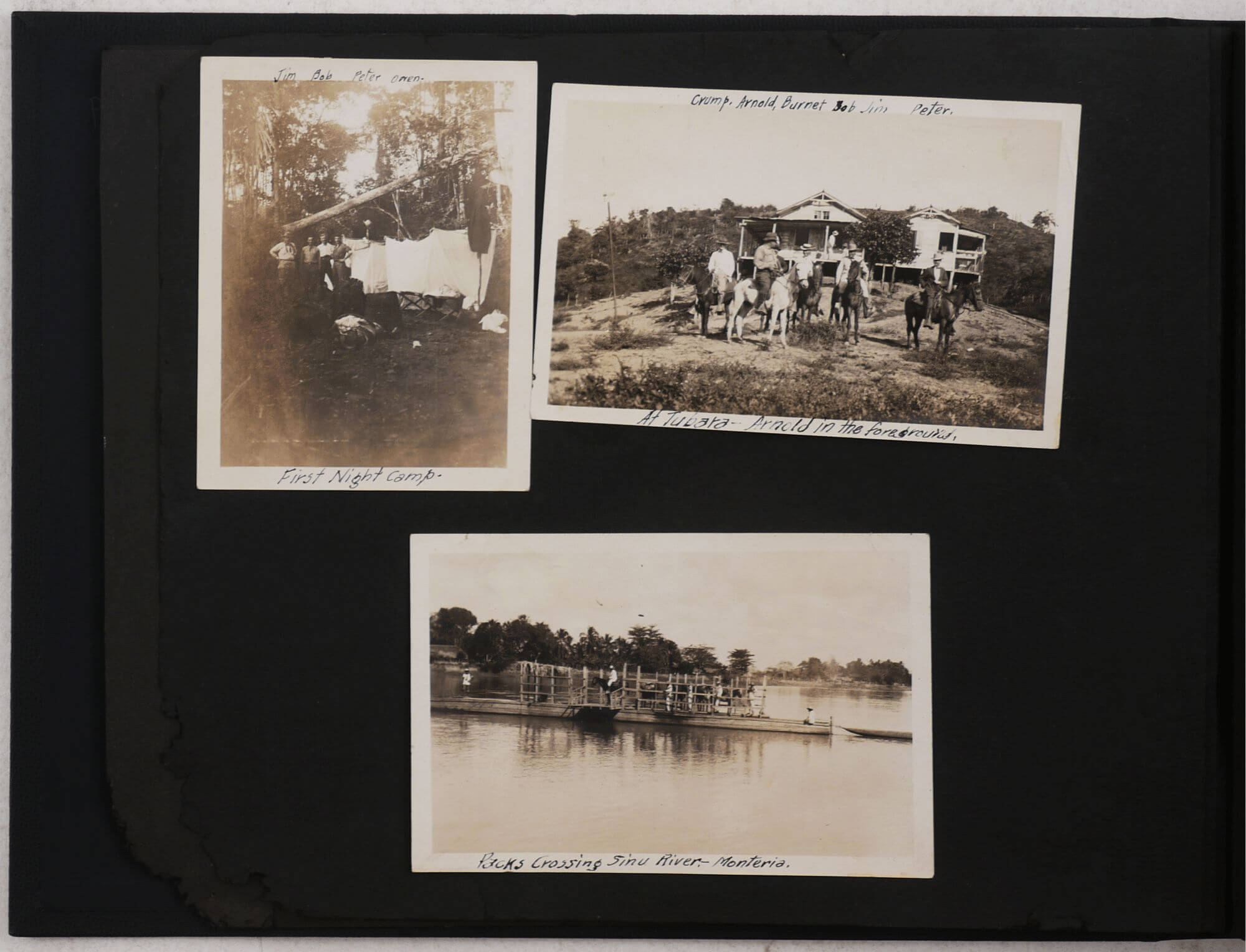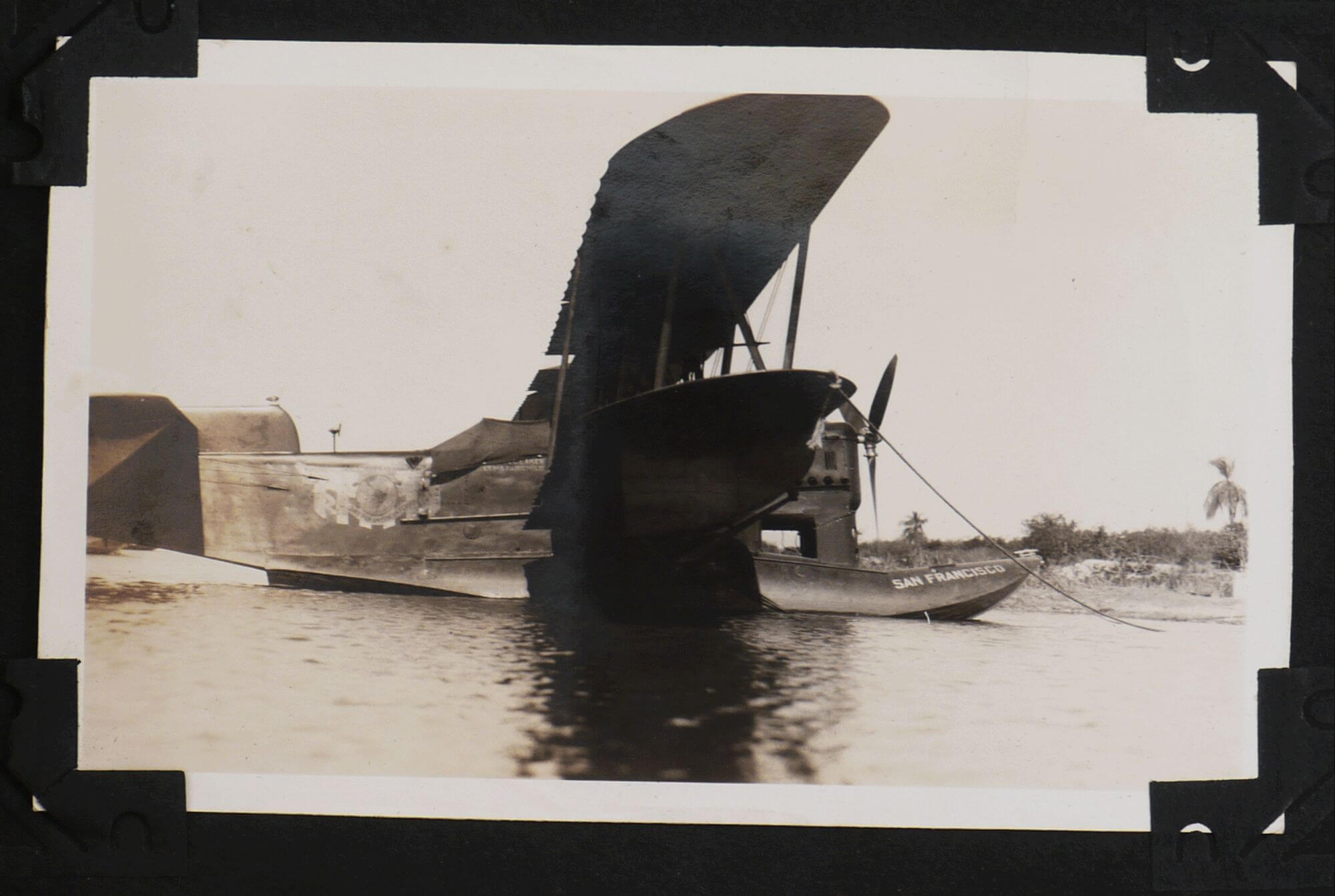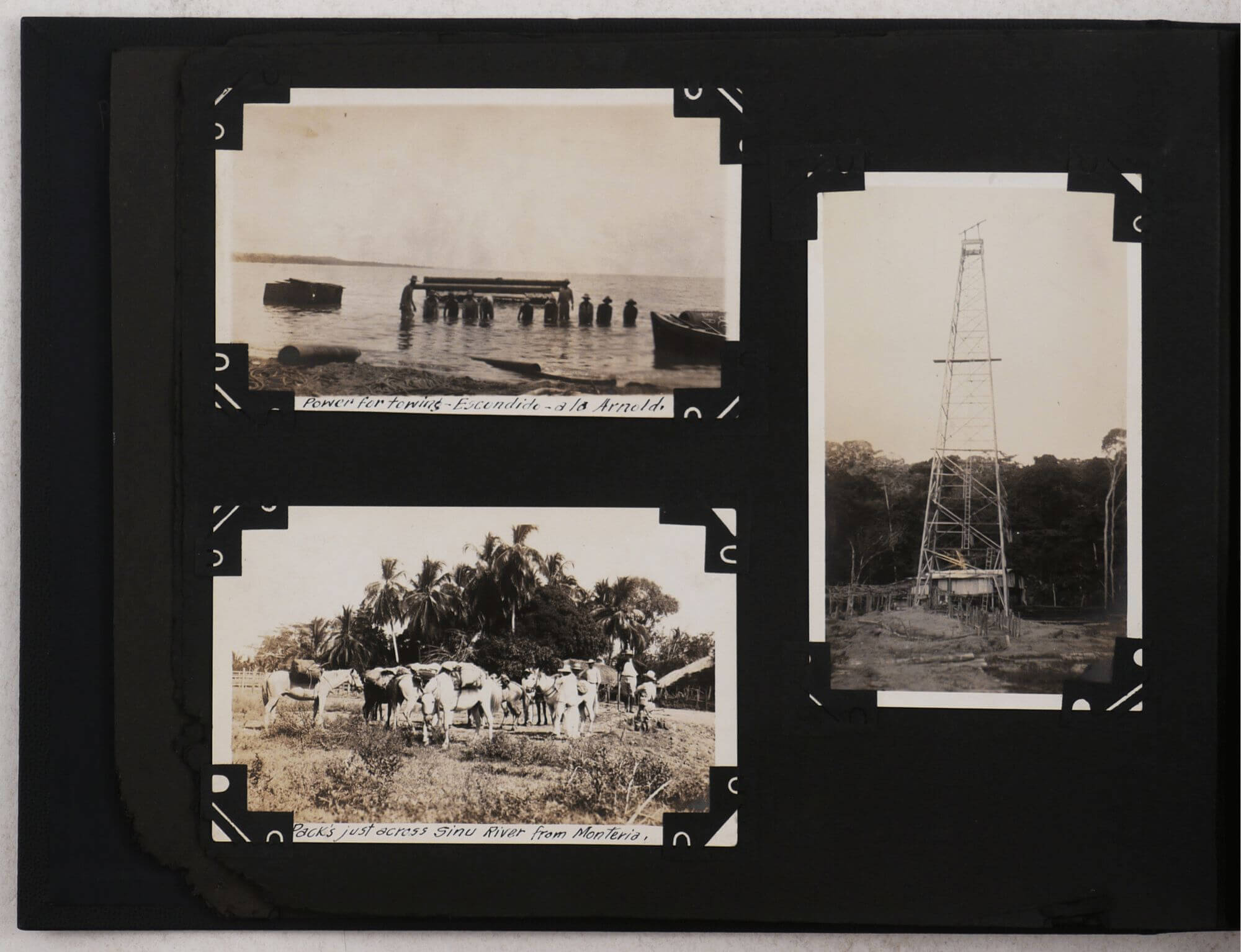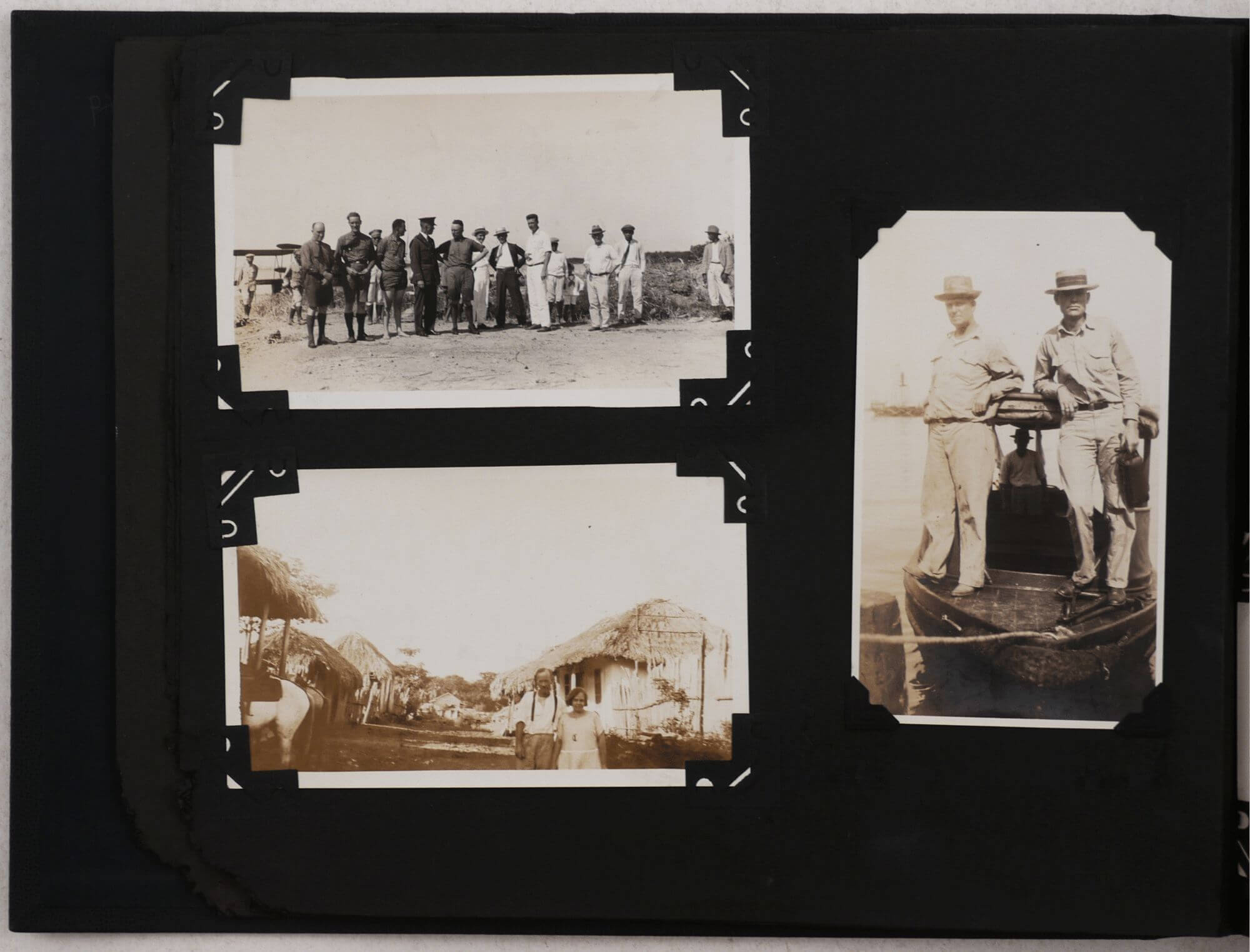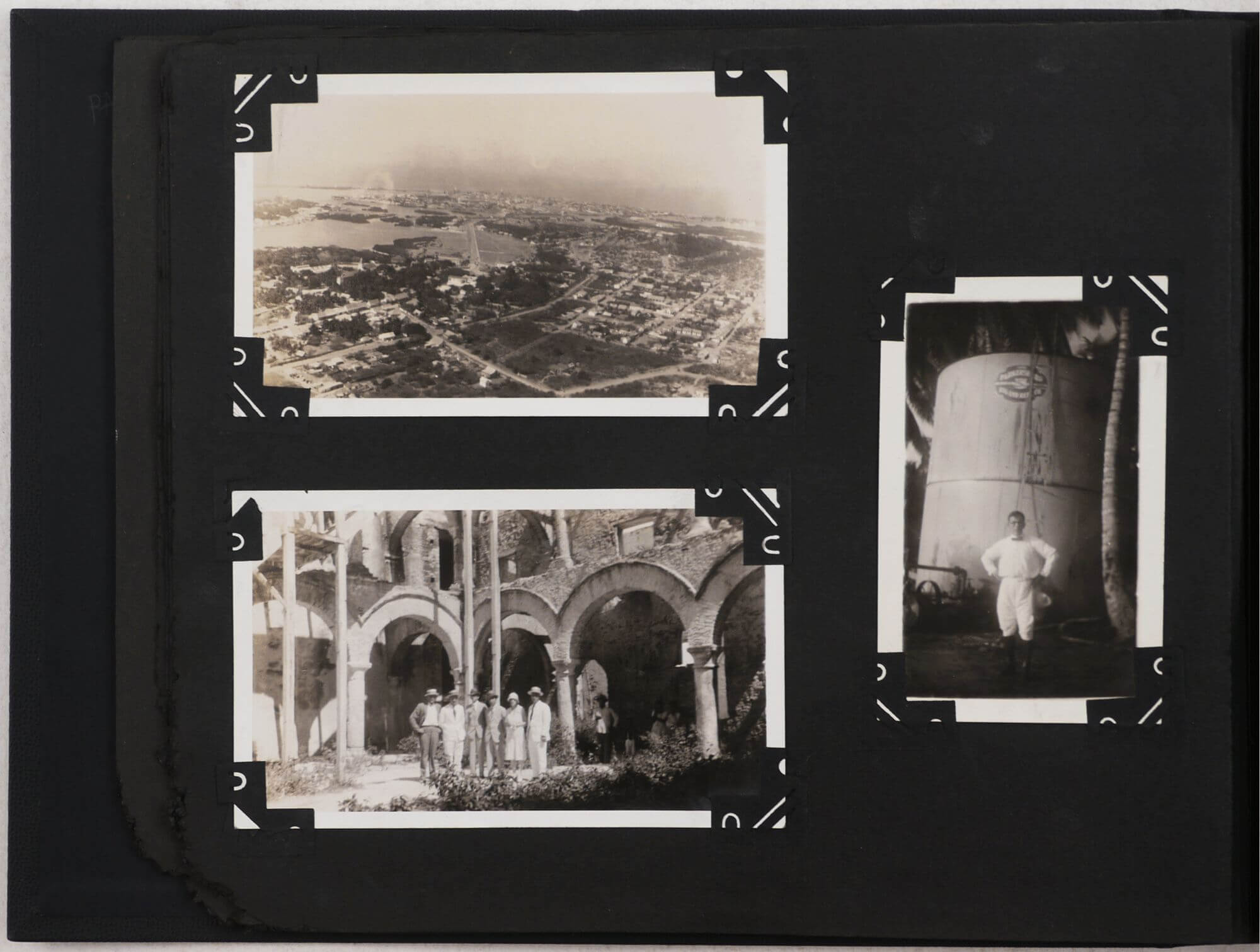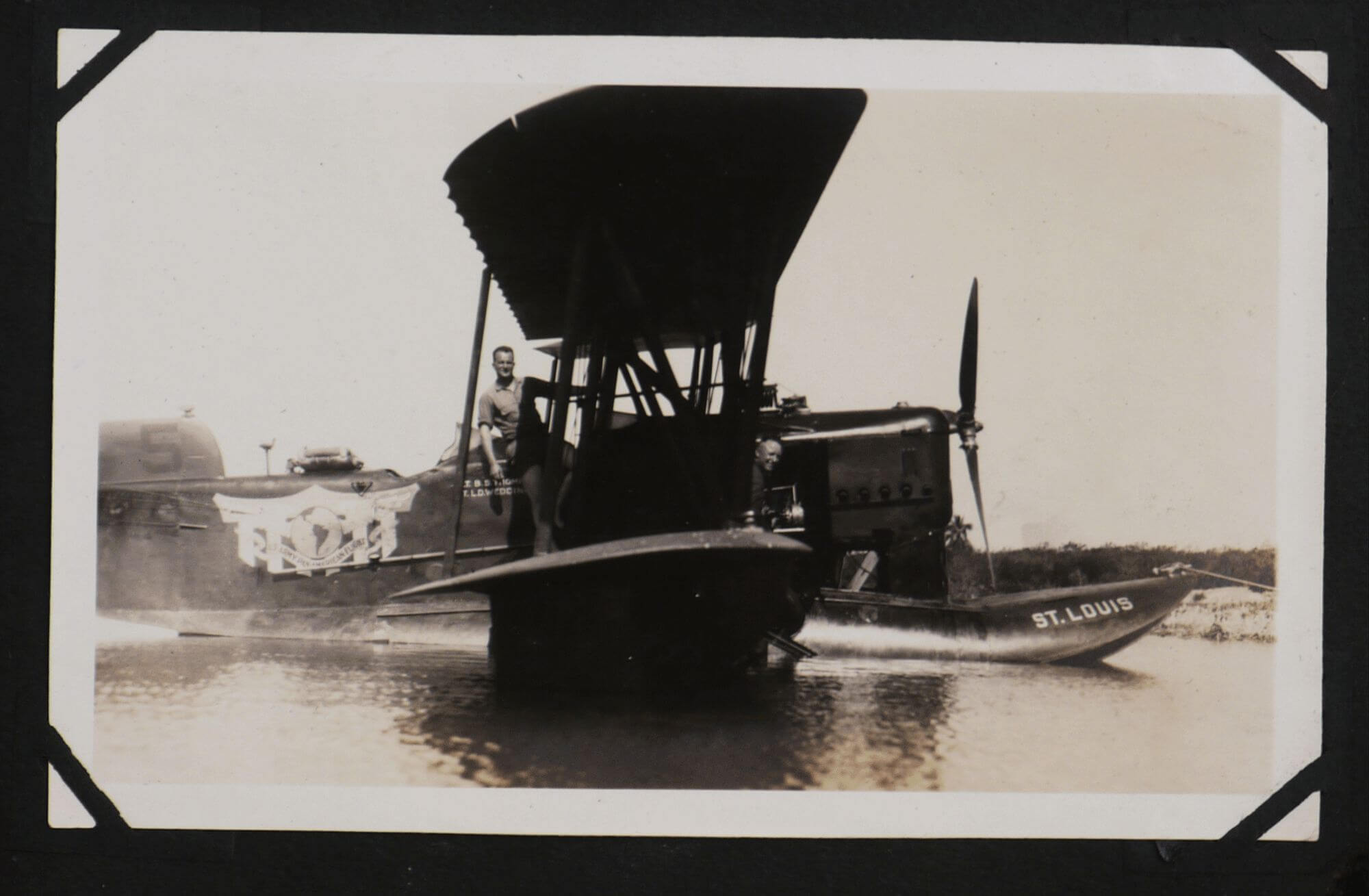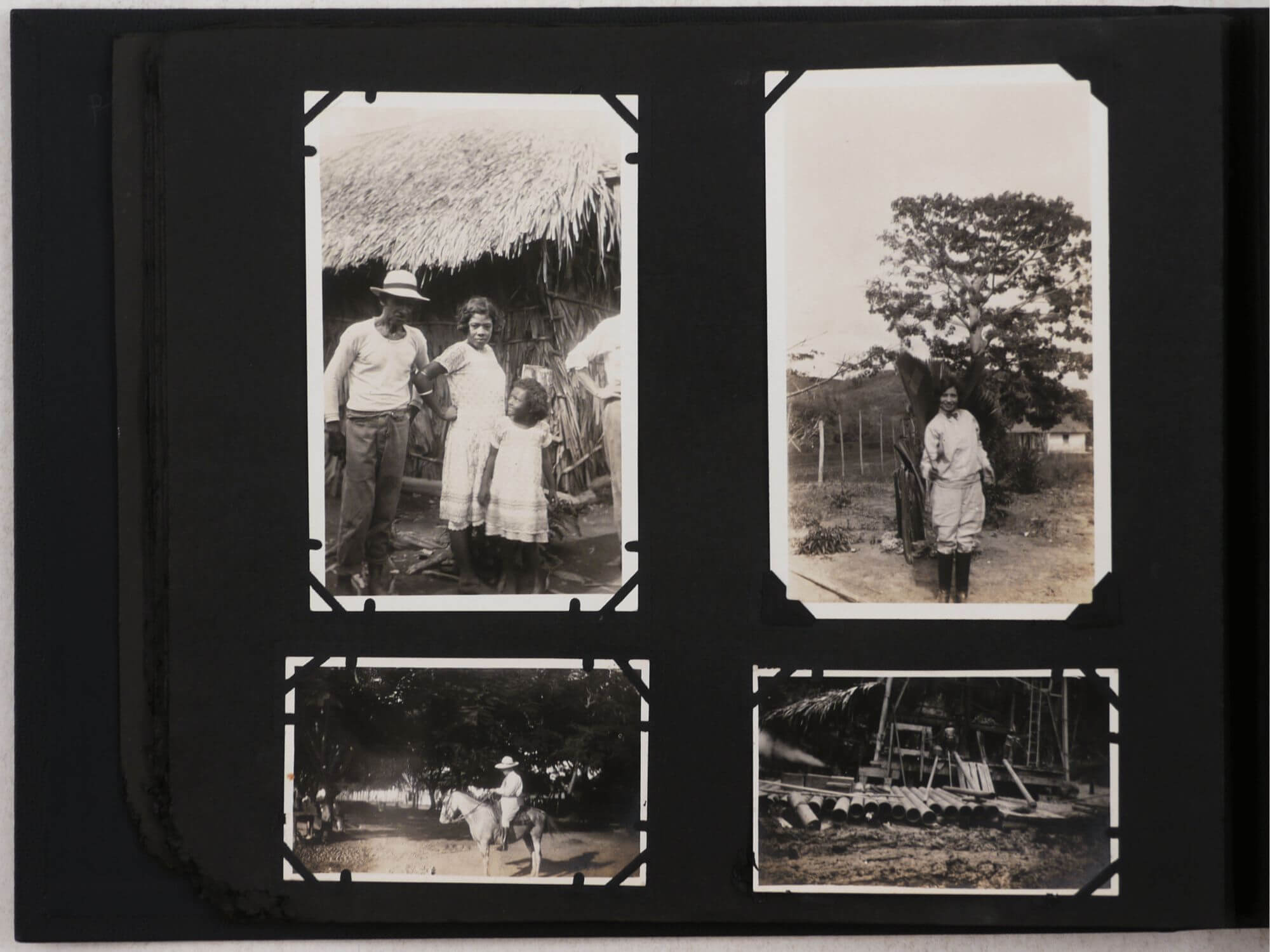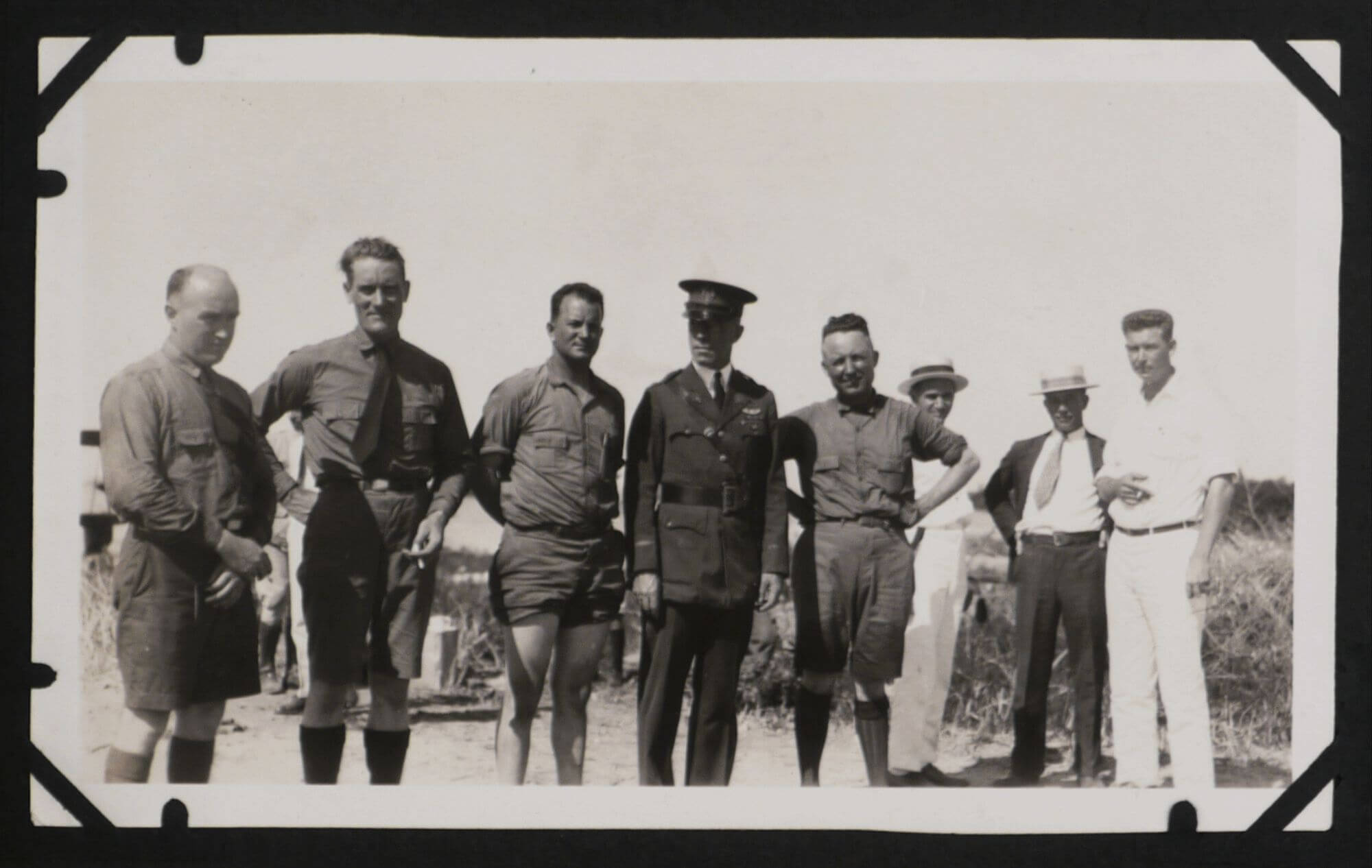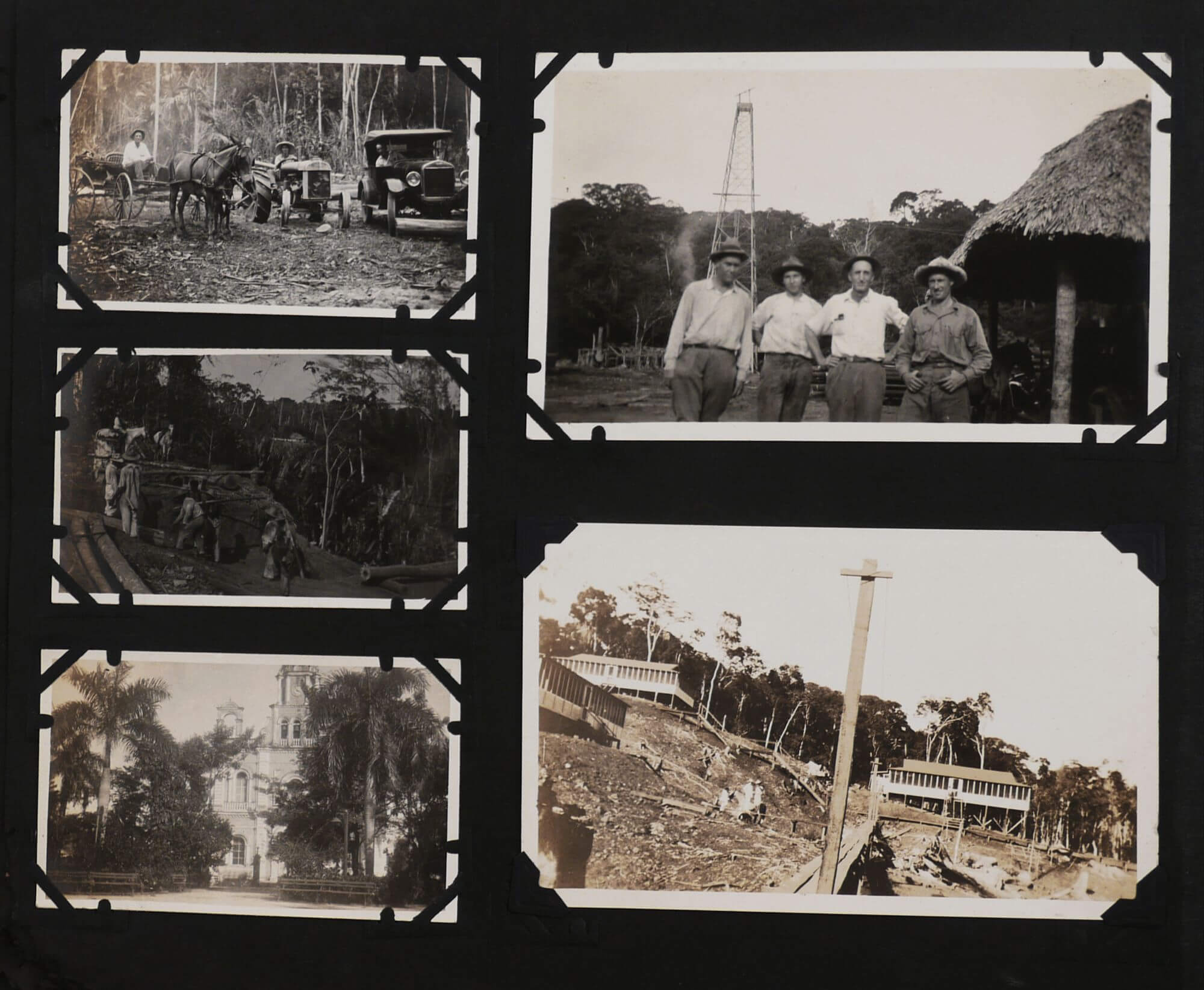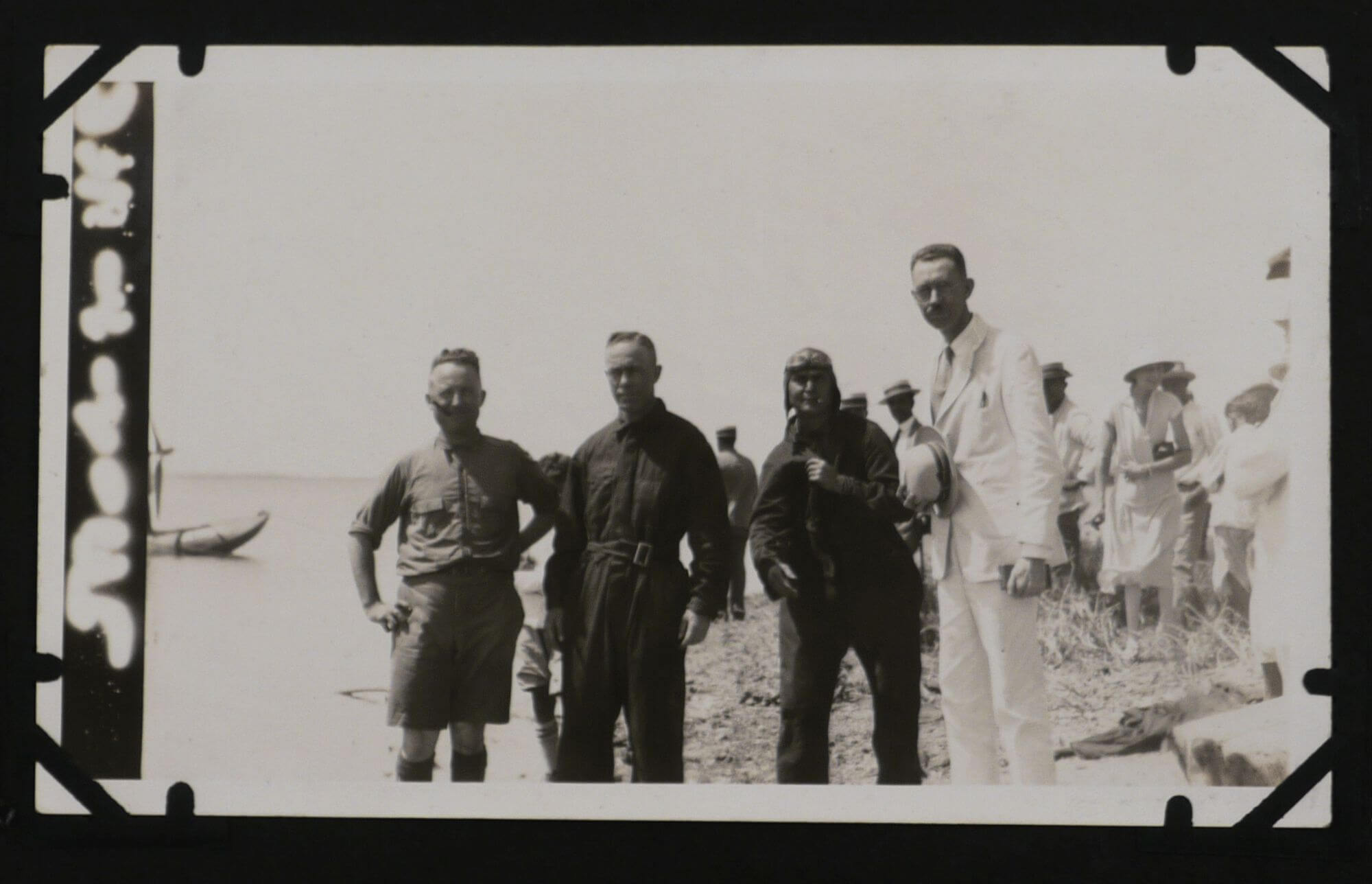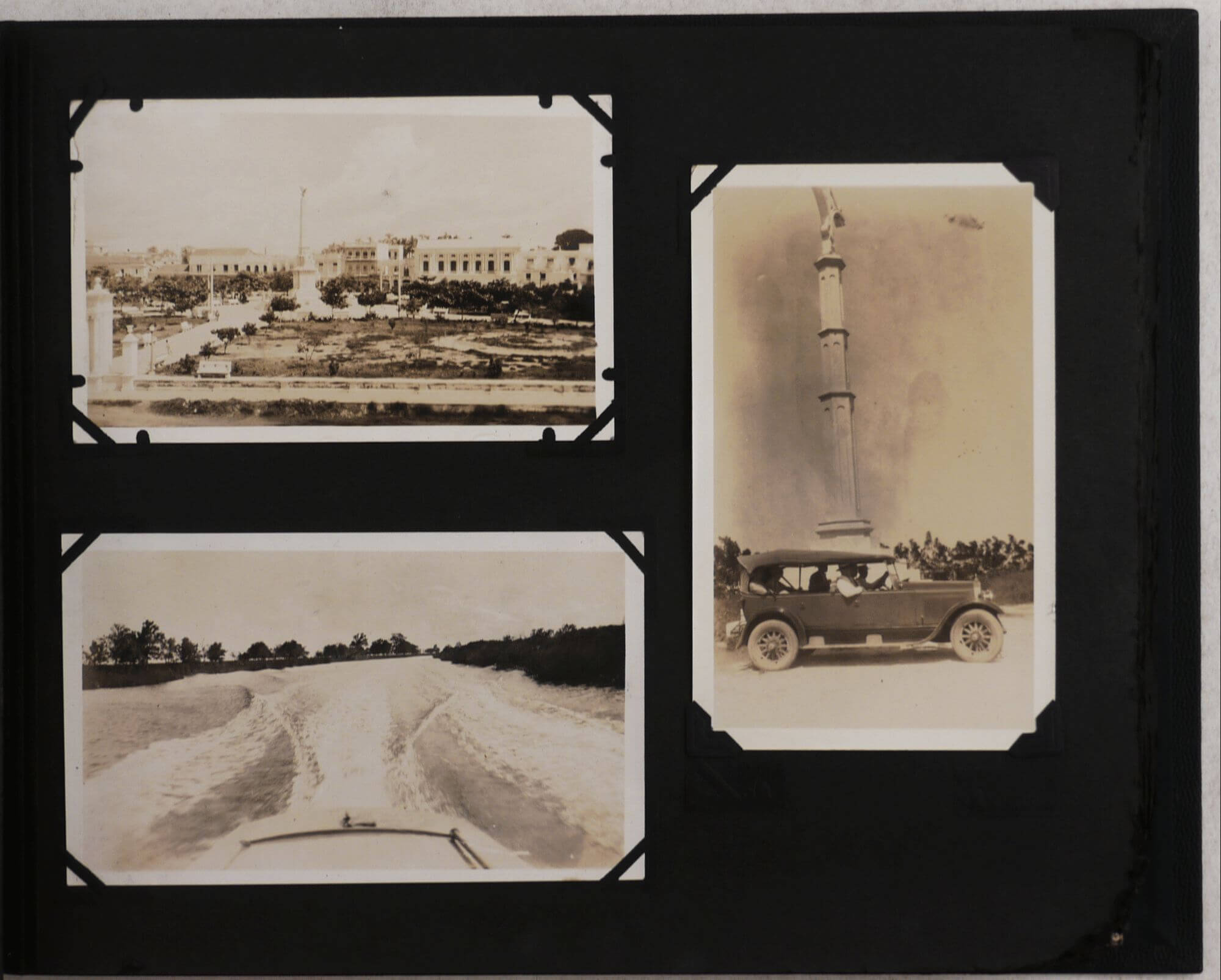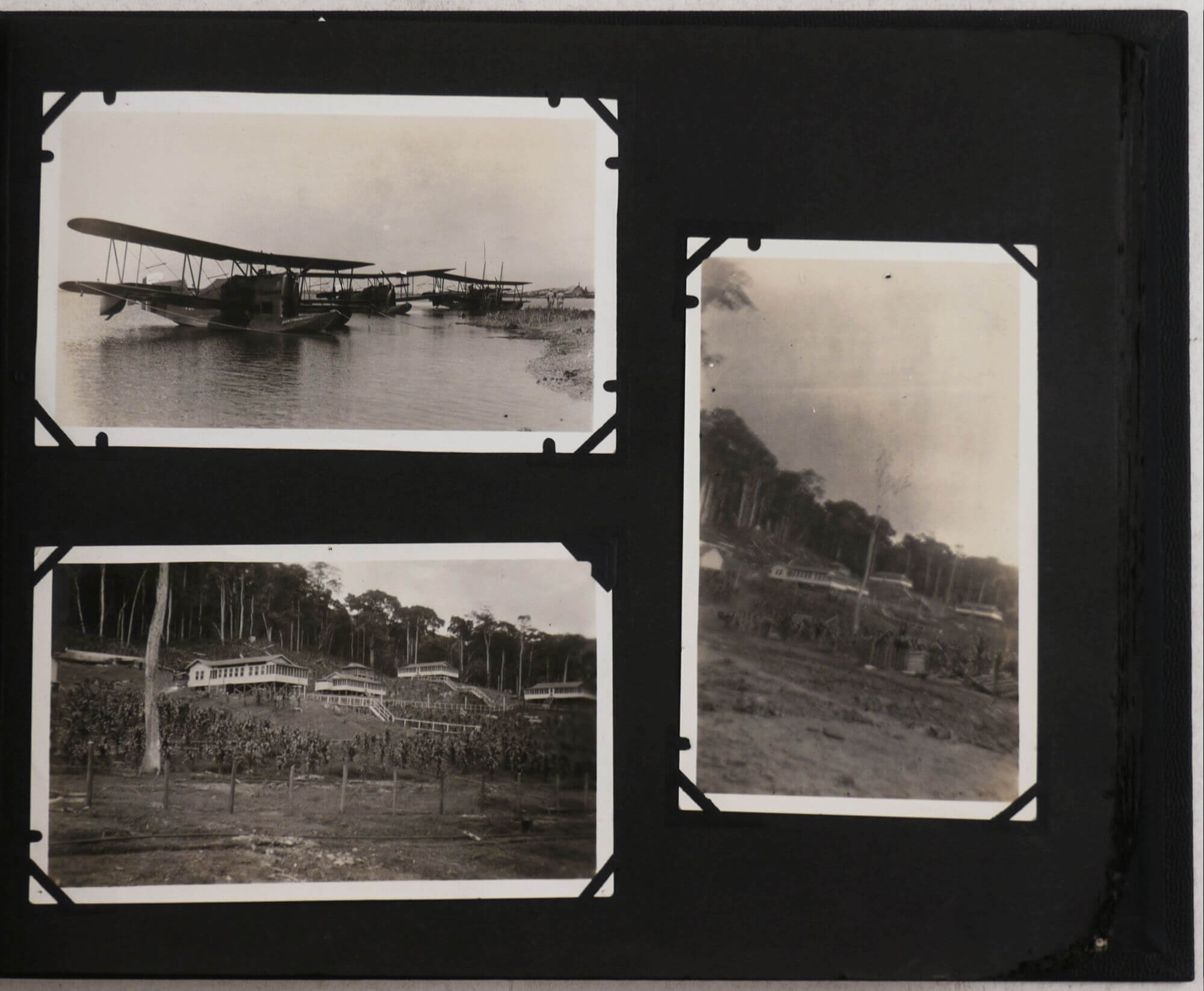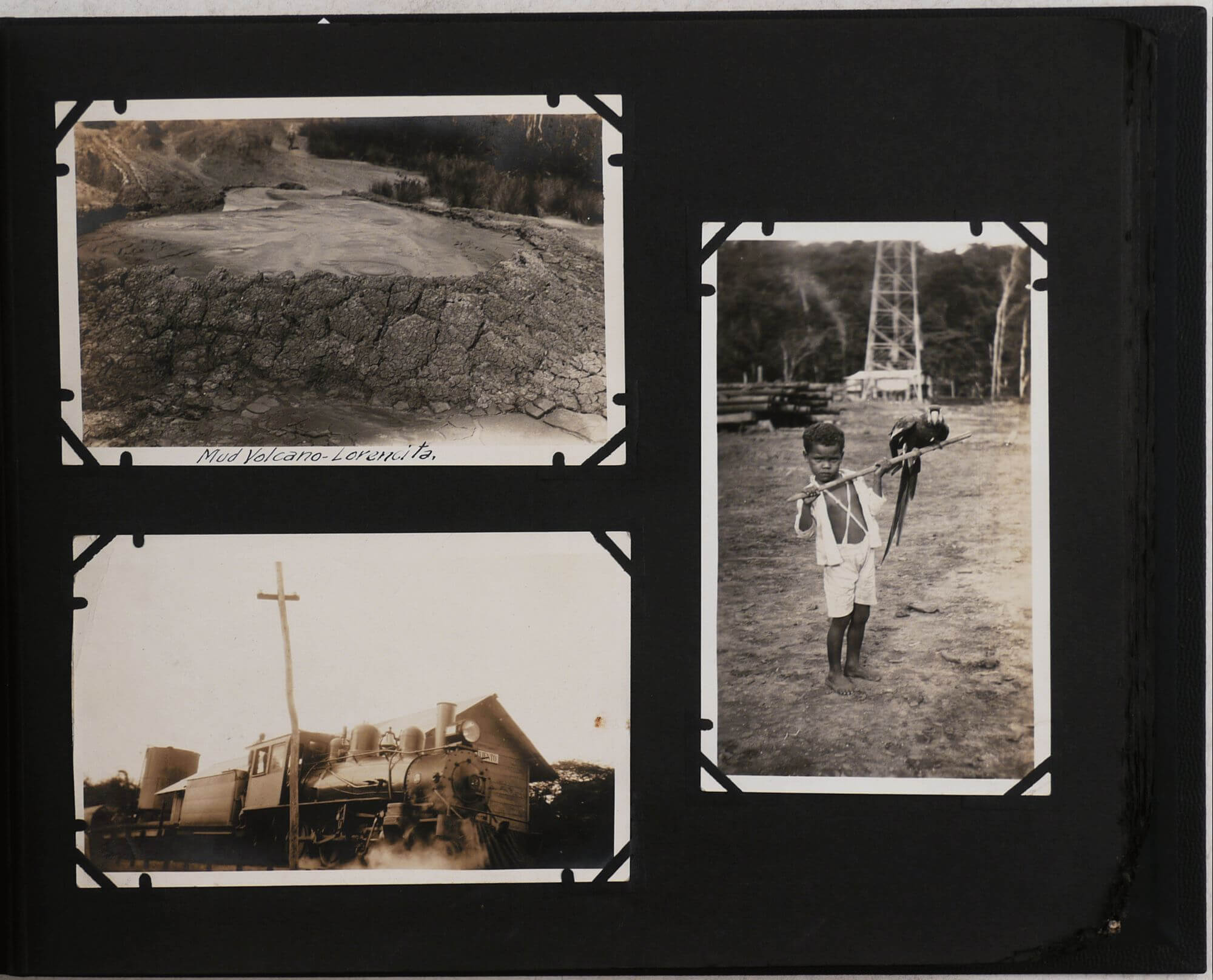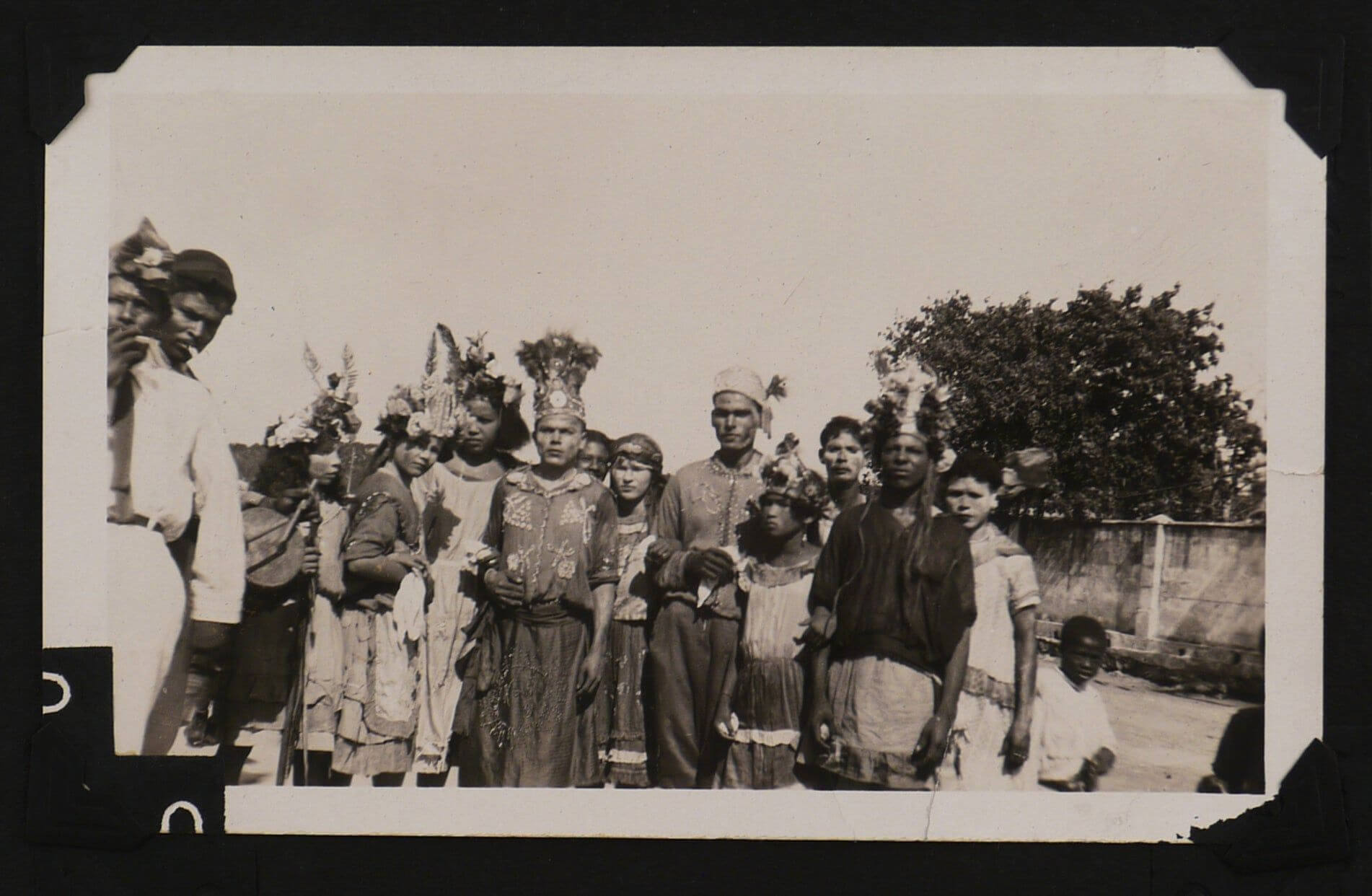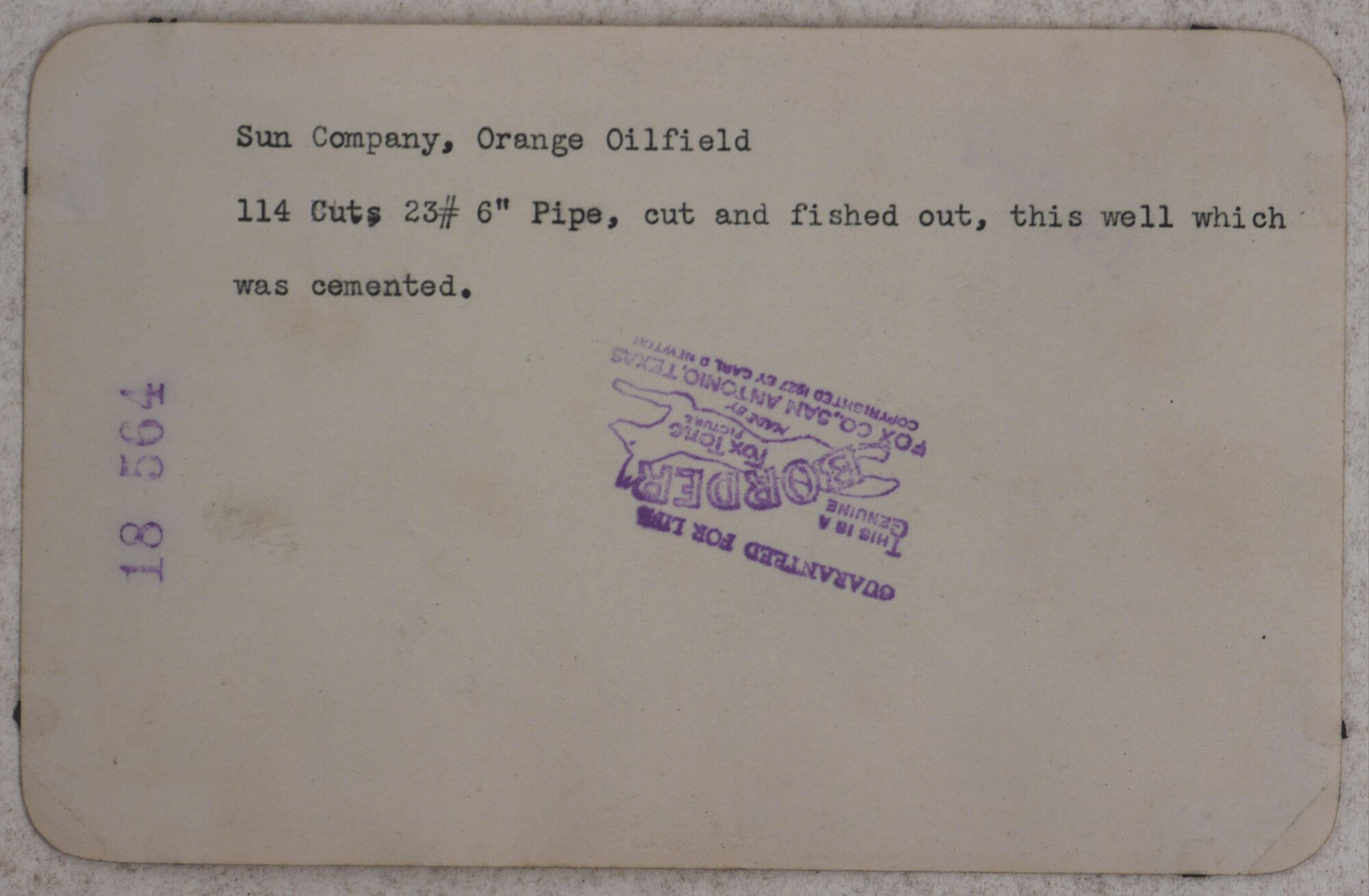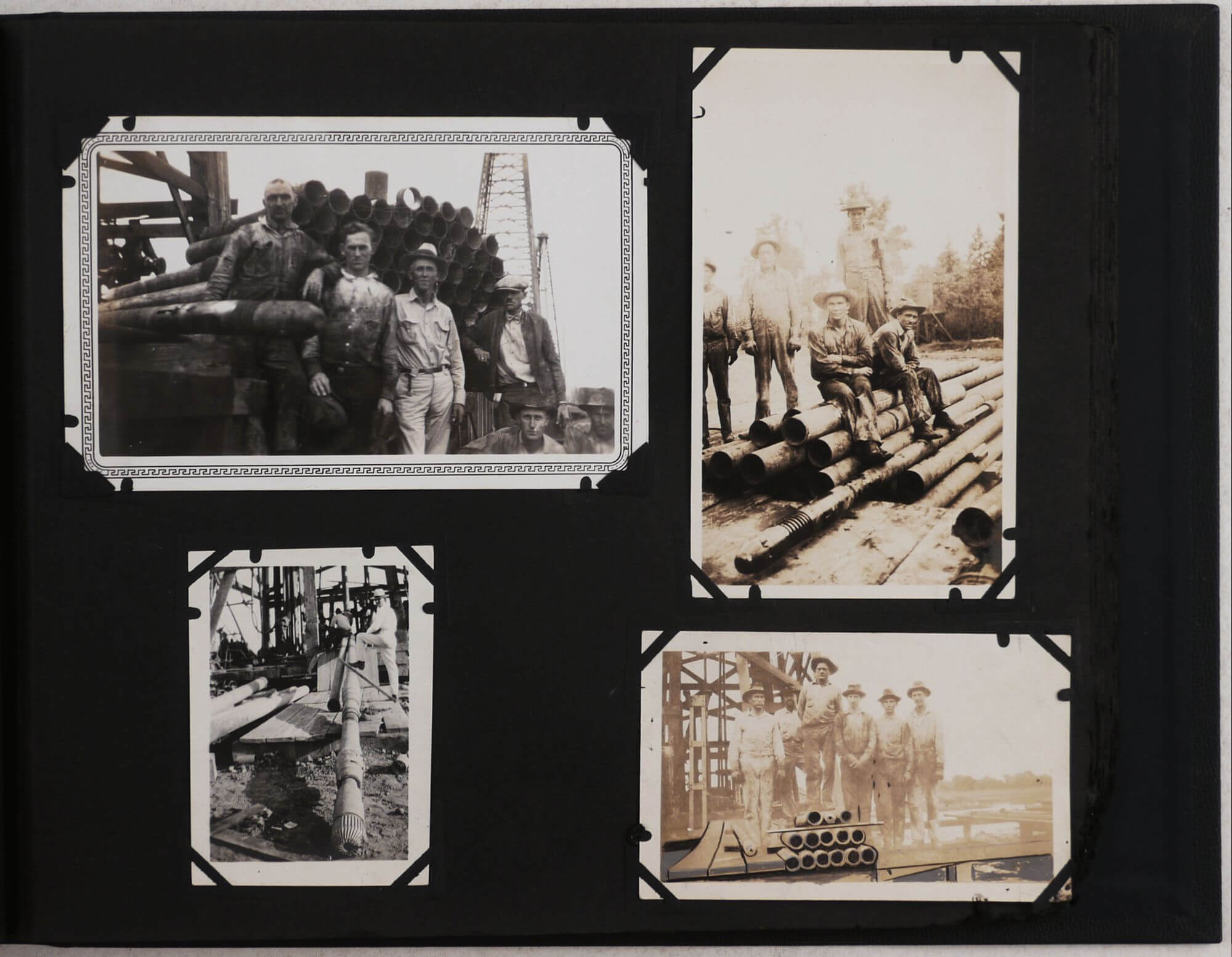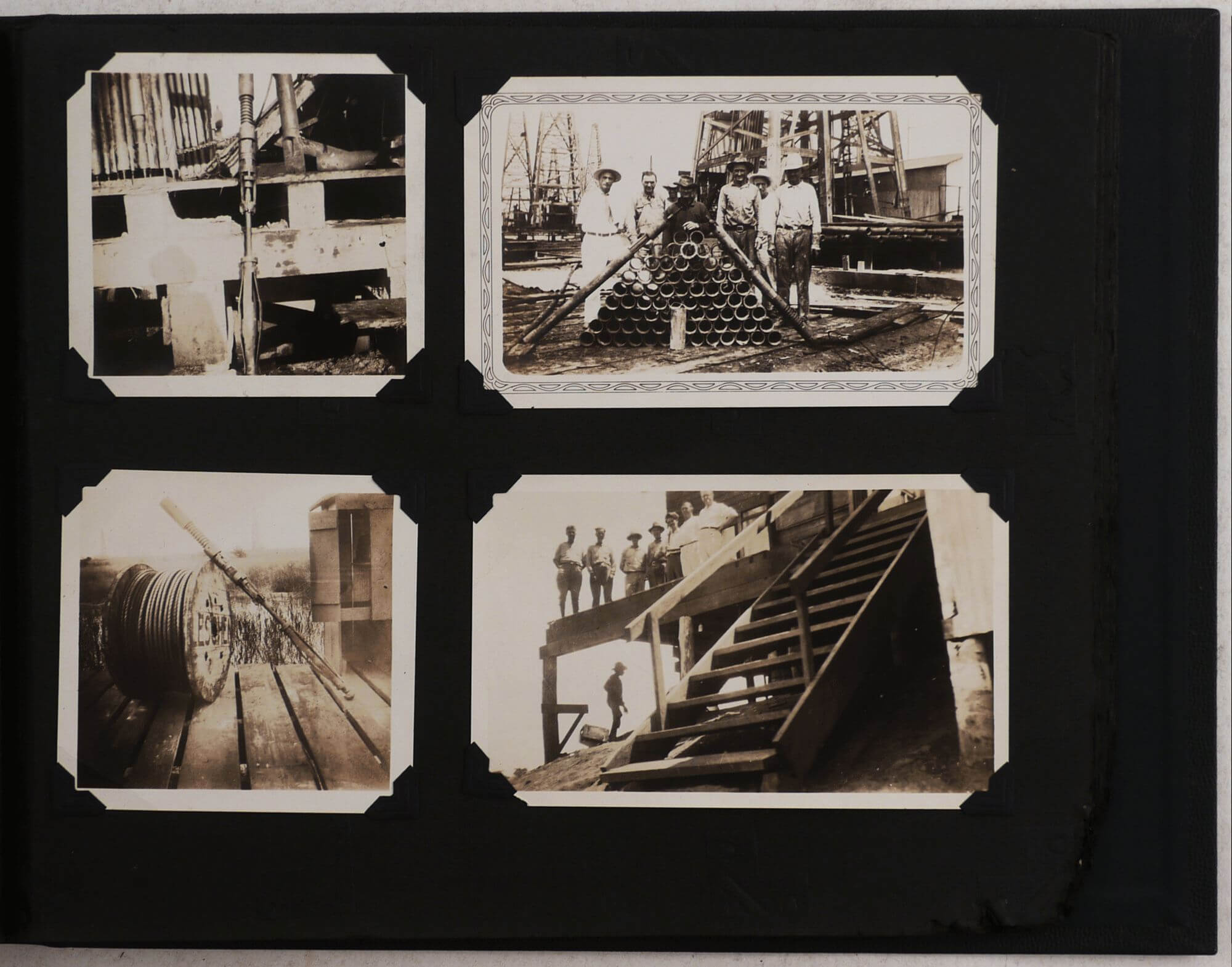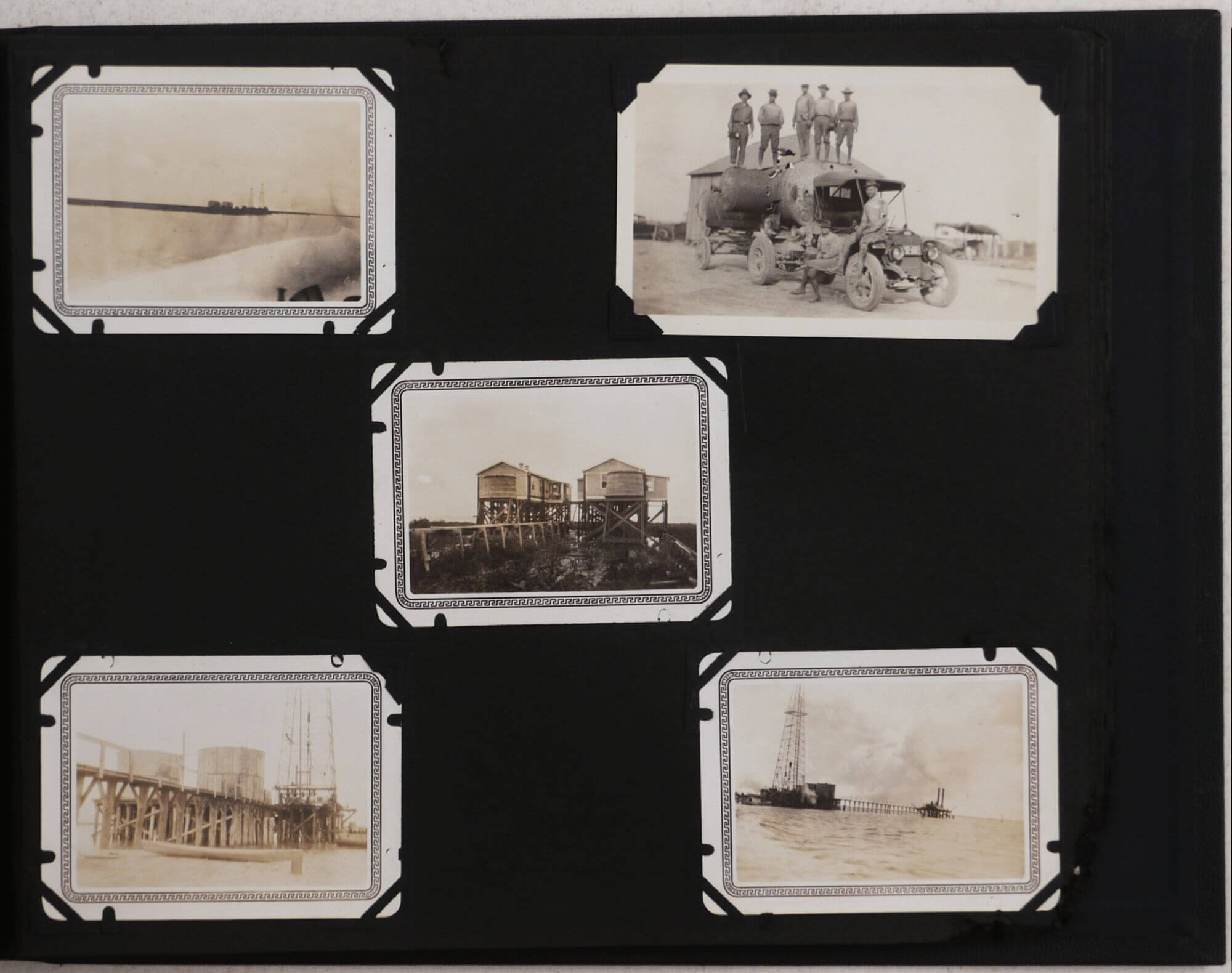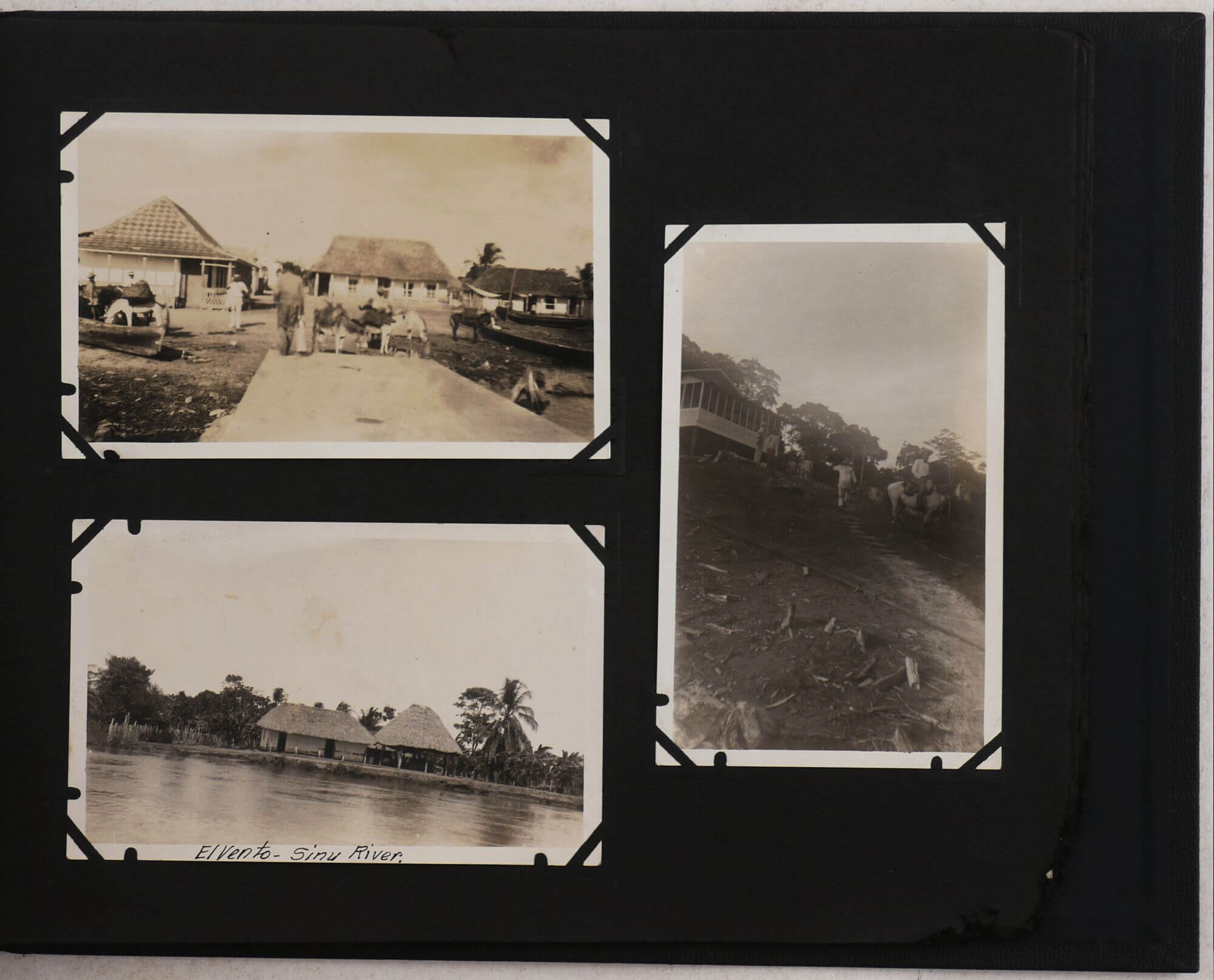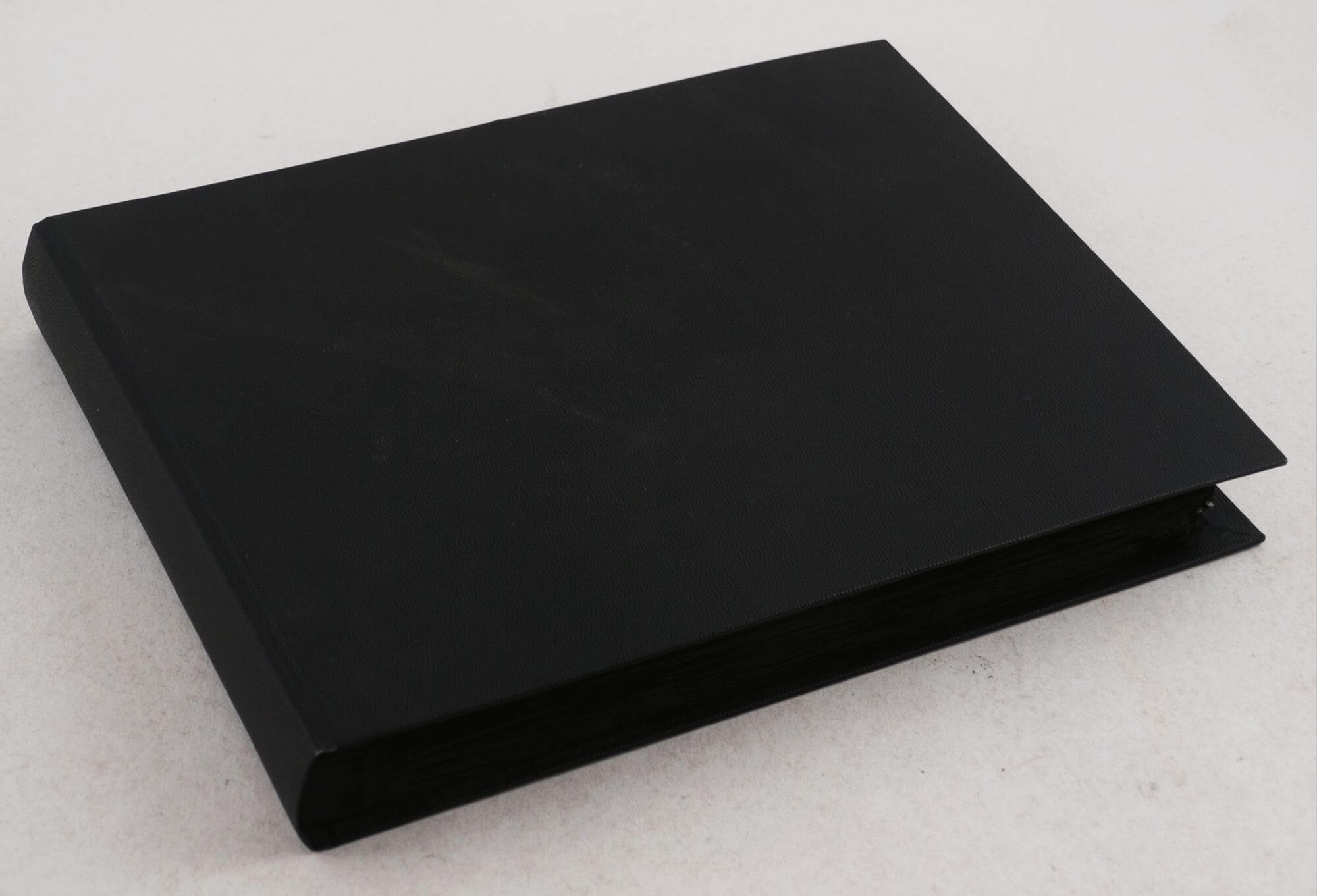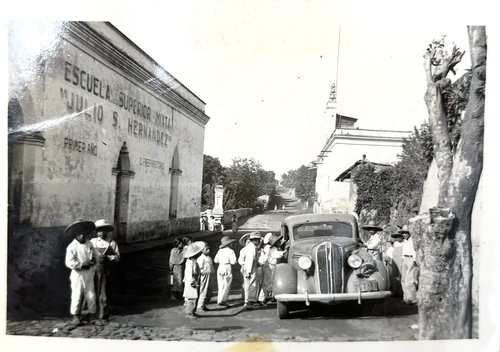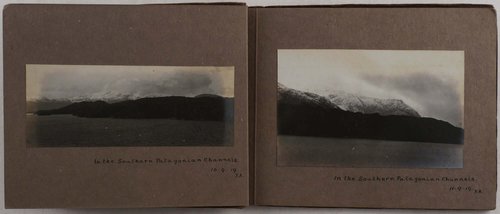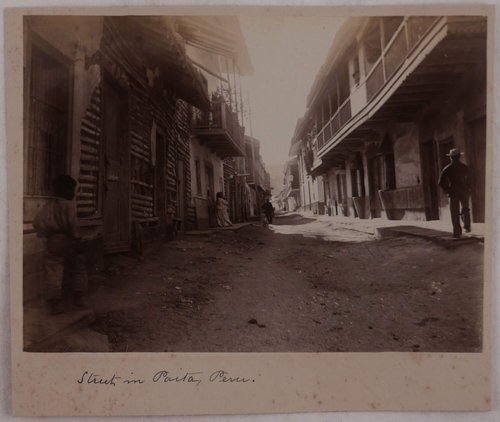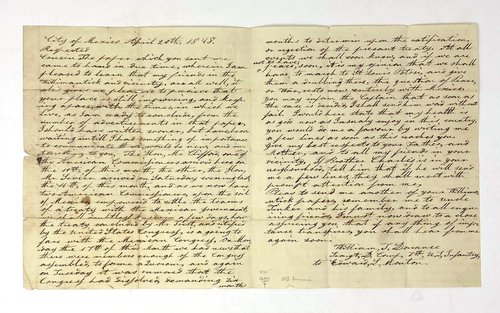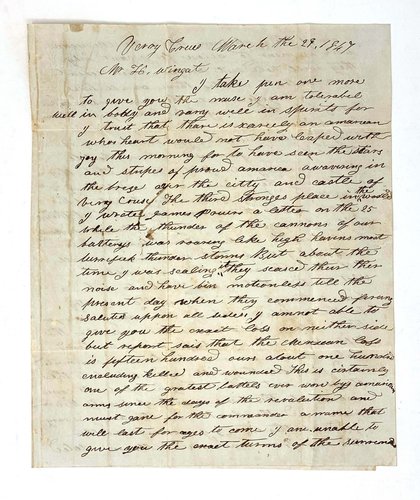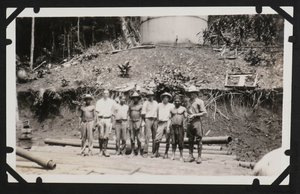
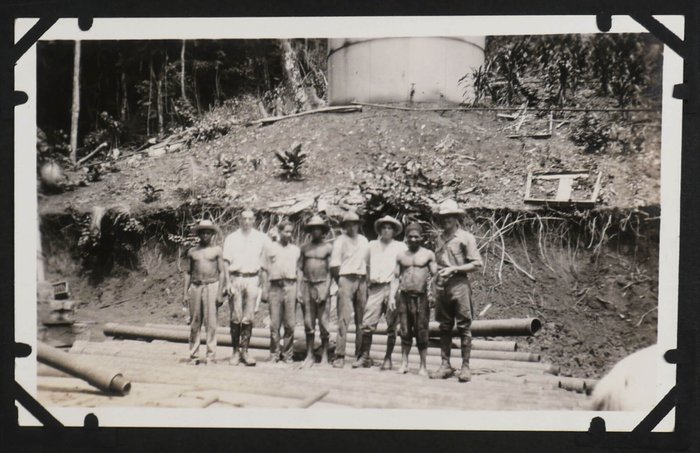
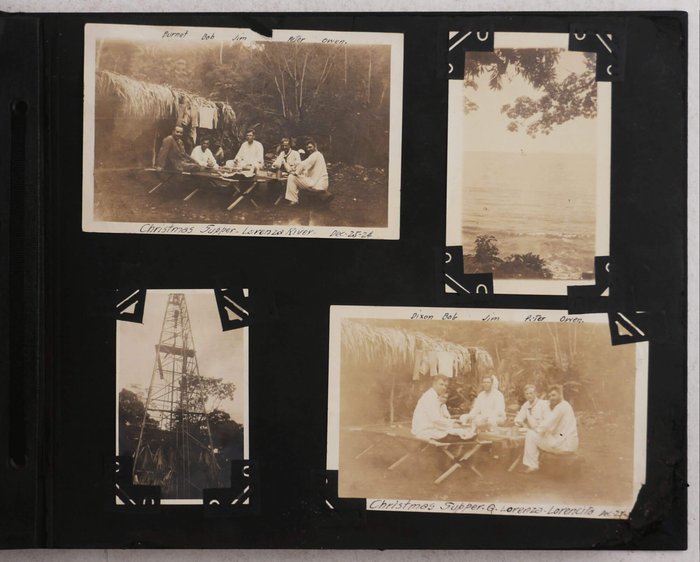
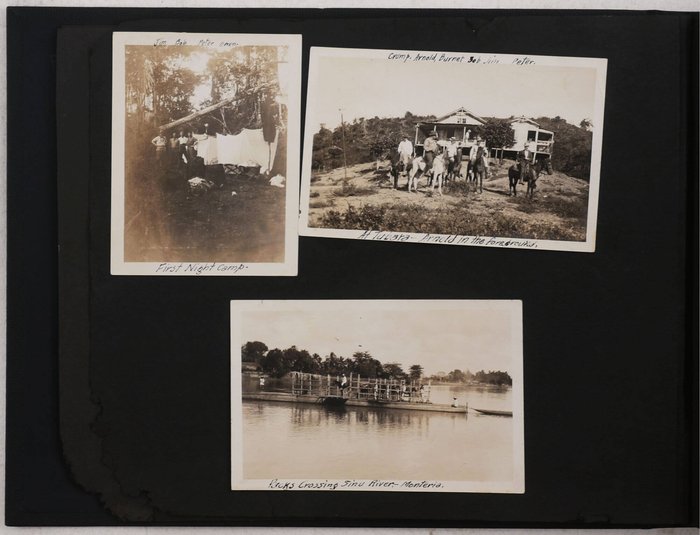
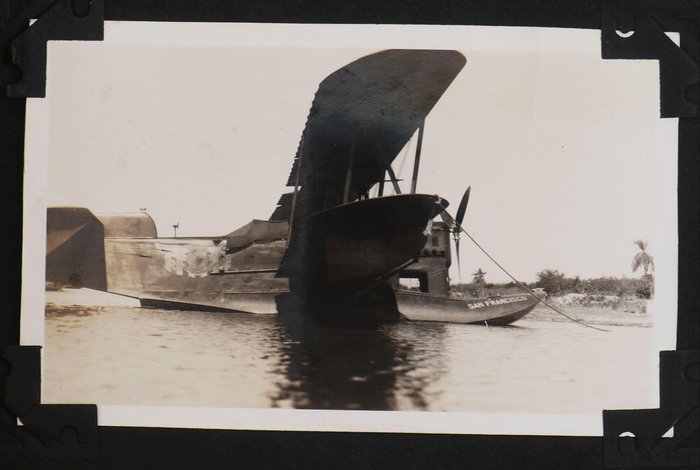
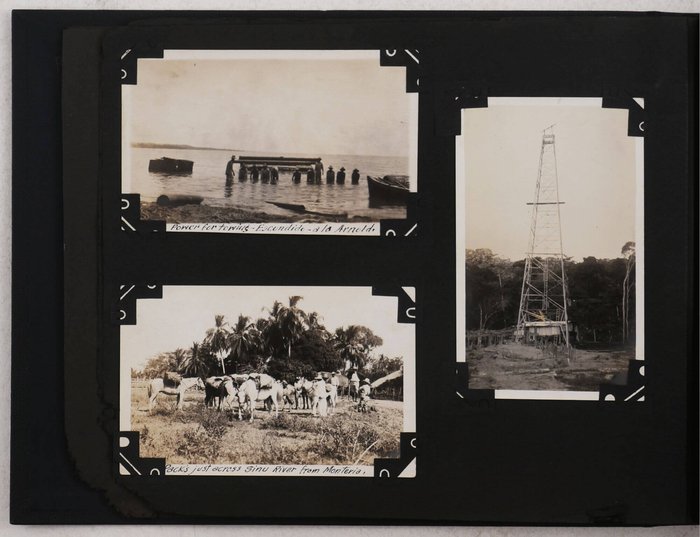
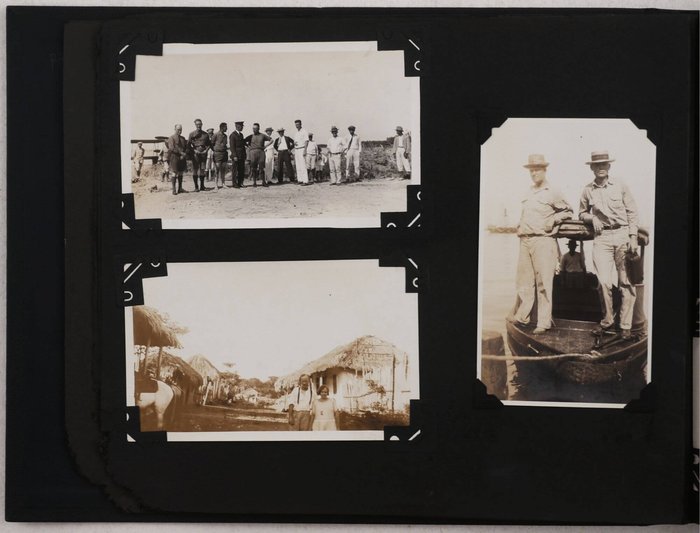
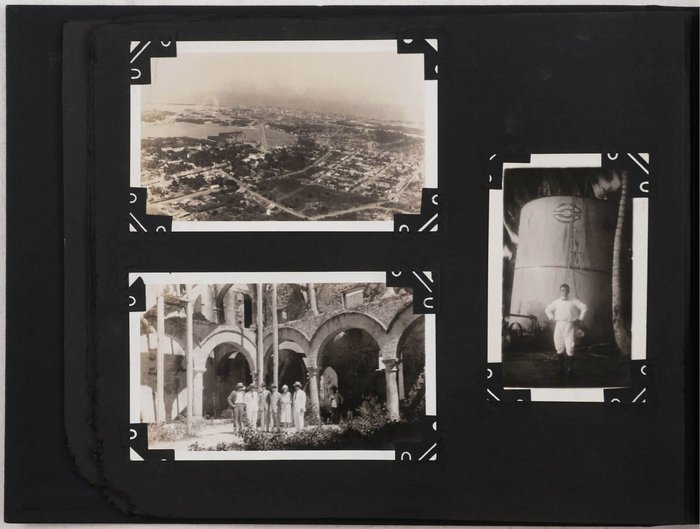
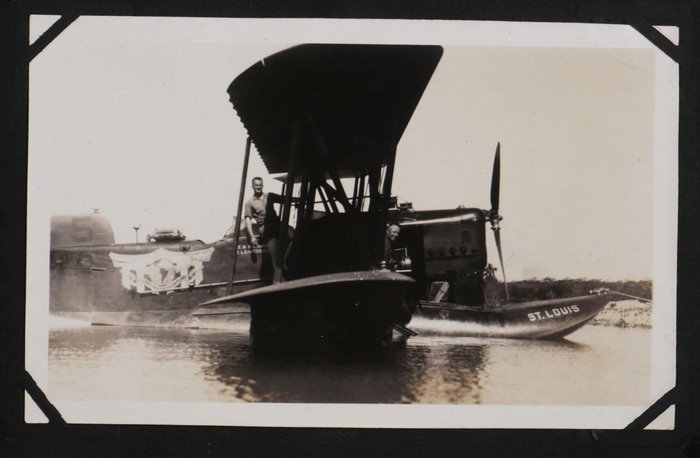
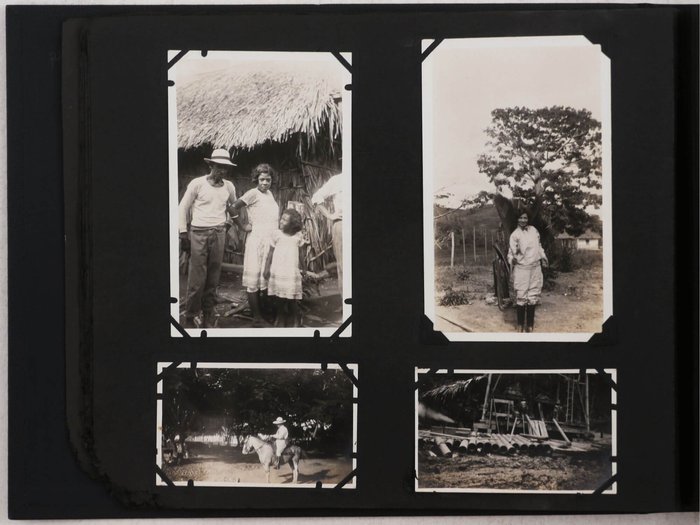
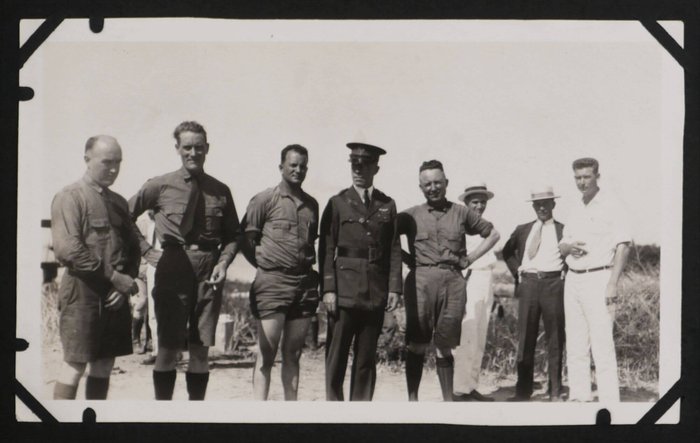
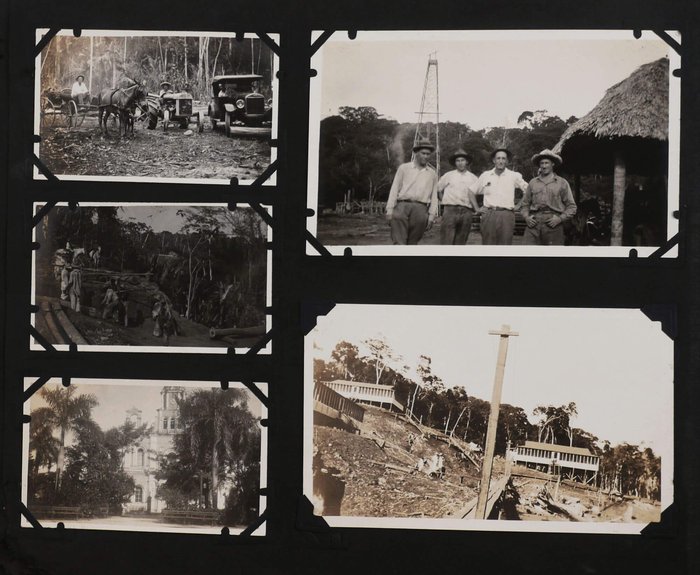
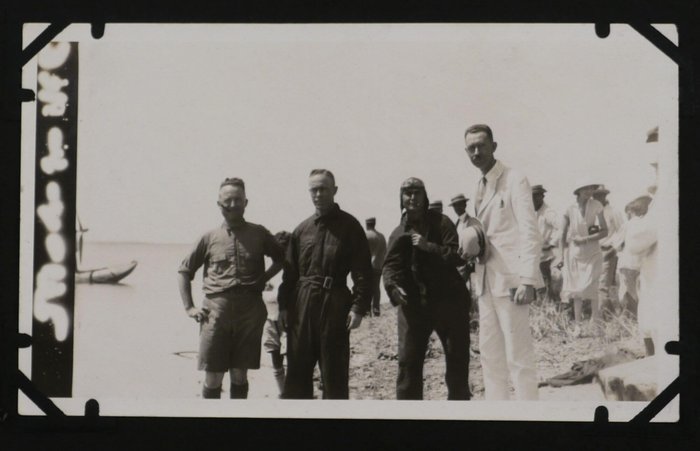
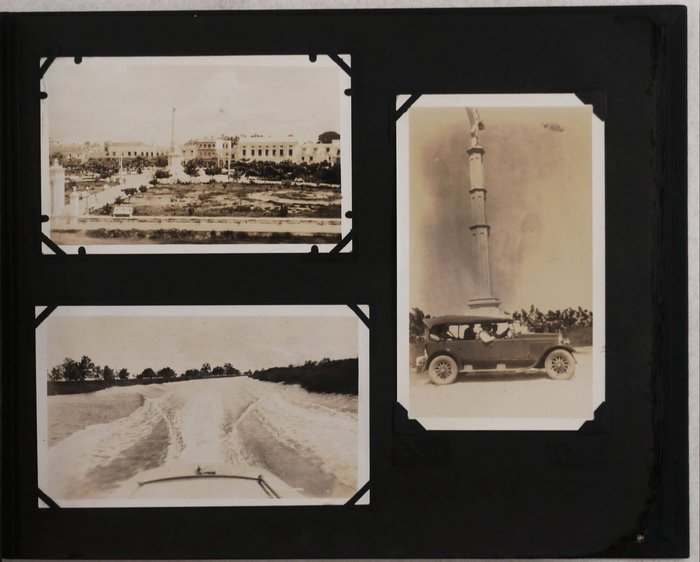
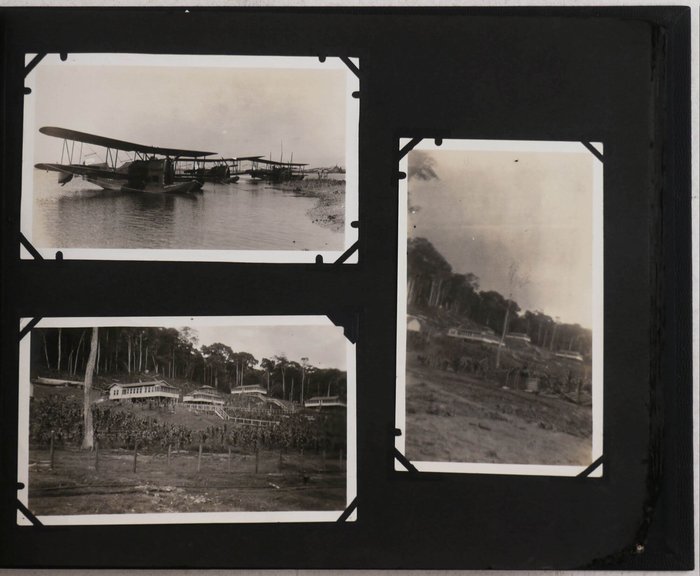
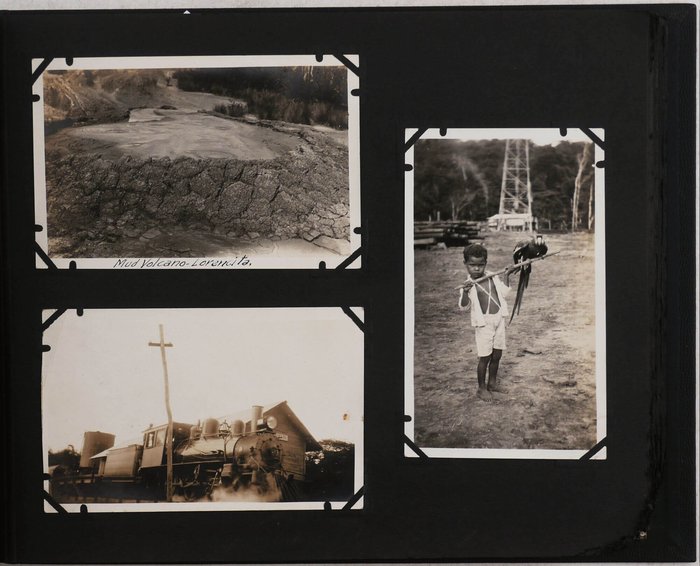
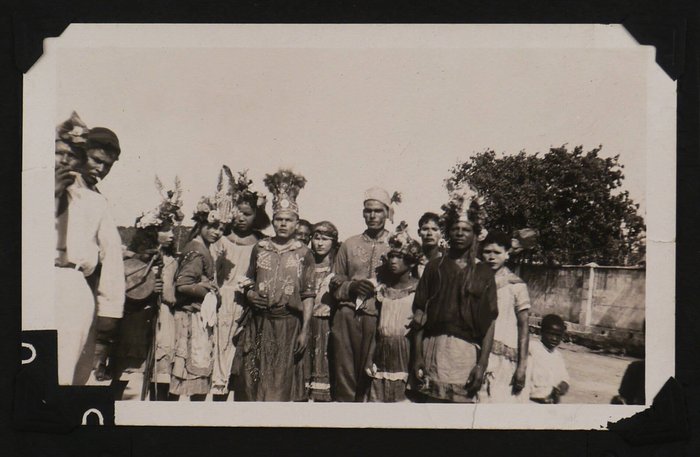
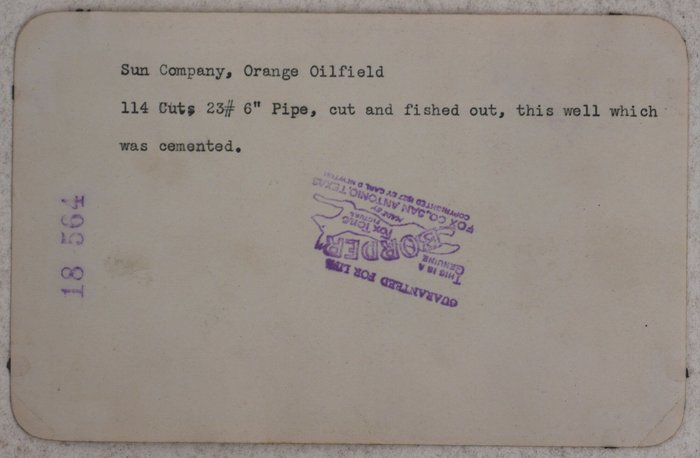
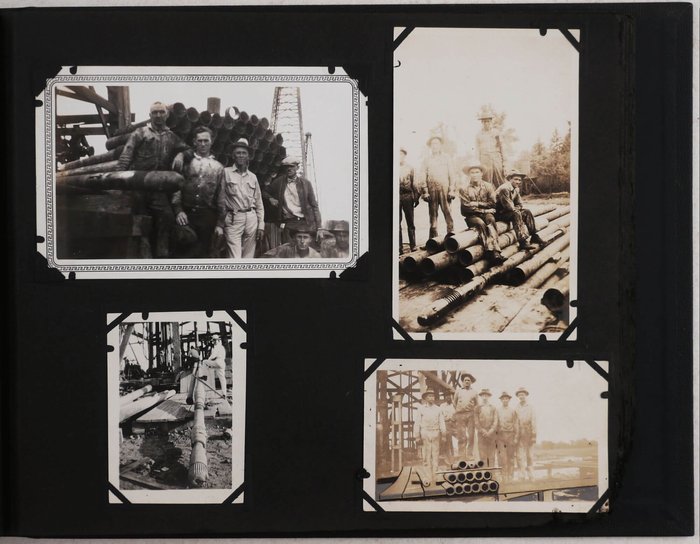
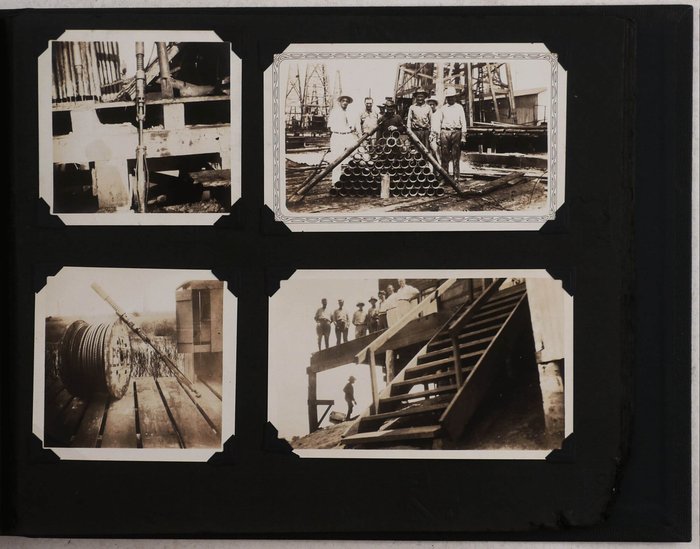
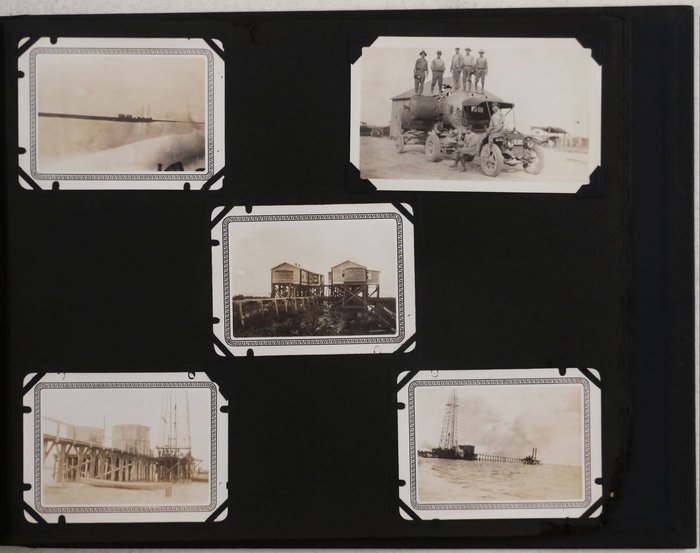
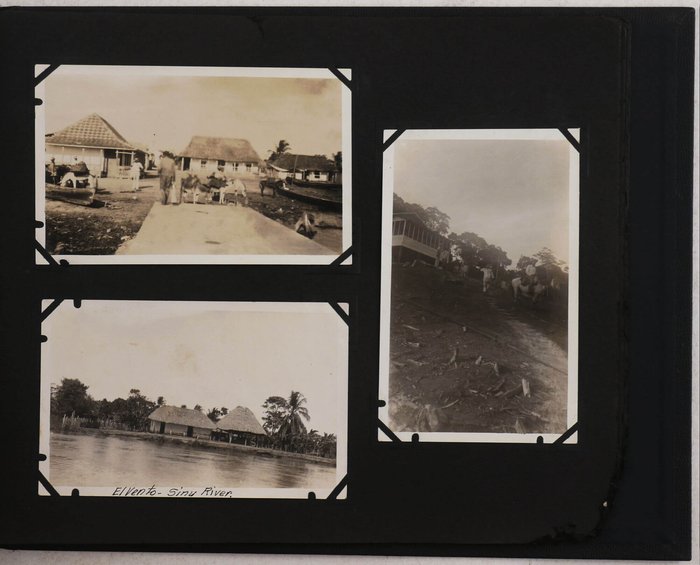
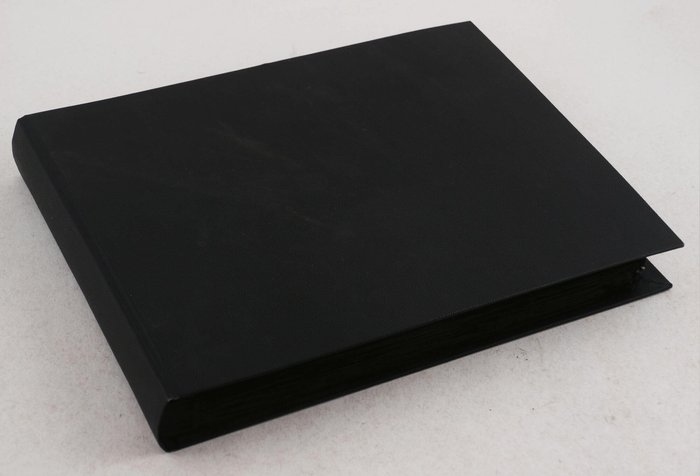
#PA89
Ca. 1925-1927, 1929
Oblong Small Folio album ca. 25x31,5 cm (9 ¾ x 12 ¼ in). 47 card stock leaves (3 blank). With ca. 320 mounted (in corners or pasted on) gelatin silver photos, from ca. 11x13,5 cm (4 ¼ x 5 ¼ in) to ca. 6x9,5 cm (2 ¼ x 3 ¾ in). Over twenty photos with period ink manuscript captions on the lower margins. About ten photos of oil drilling in Texas and Louisiana with period ink, pencil or typewritten captions on verso; several photos are with the ink stamps of “Fox Tone Picture, San Antonio, Texas” (some are also with ink dates “Sep. 1929”) on verso. Period style black pebbled cloth album. Lower right corners of the mounts with minor tears and losses, a few photos with minor creases, silvering or mildly faded, but overall a very good album of interesting strong photos.
Historically significant extensive collection of early original photos, dedicated to oil drilling in Colombia, Texas and Louisiana in the 1920s. The album documents the activities of a noted Texan oilman and philanthropist, James Smither Abercrombie and was apparently compiled by his business partner or family member – possibly, his younger brother Robert Haden Abercrombie (1894-1978).
James (Jim) Abercrombie started working in the Texan oil industry in 1909 and by 1918, had enough money to drill for oil in South Texas and the Gulf Coast on his own. In the early 1920s, he owned the “Cameron Iron Works” – “a business that sold oil-drilling supplies and parts for rigs and wells,” and “was the president of the expanding James S. Abercrombie Company, an independent drilling operation with five rigs” (Handbook of Texas// Texas State Historical Association; source). In 1921, Abercrombie and his business partner Harry Cameron invented and patented a blowout preventer, which helped to control the increasing gas pressure in deep oil wells. The invention fostered the quick growth of the “Cameron Iron Works.” In 1925-1927, Abercrombie explored and drilled for oil in the concessions of the Tropical Oil Co. along the Sinu River in northwestern Colombia. As a result, “natural gas was discovered in several locations, along with marginal quantities of oil” (Nicholson, P.J. Mr. Jim: The Biography of James Smither Abercrombie. 1983, p. 250). In 1929 he drilled in the oilfields in Texas and Louisiana. During WW2, the “Cameron Iron Works” became an arms supplier for the US Army. In 1950, Abercrombie became one of the main founders of the Texas Children’s Hospital.
Most part of the album is dedicated to Abercrombie’s oil drilling in Colombia. The images show workers unloading drilling machinery at Puerto Escondido, ferrying it across the Sinu River to Monteria (the operation headquarters), Abercrombie and his partners in the camps at Tubara and Lorencita, drilling rigs under construction, oil holding tanks, Sinu River, a “mud volcano” in Lorencita, local villages and their inhabitants, &c. Several views of Cartagena include panoramas taken from the grounds of the Convento de la Popa, a group portrait of Abercrombie and his friends posing in front of the Convento’s cloister, photos of the Centenario Park with the statue of the Andean condor, &c. Several other portraits, evidently taken in Cartagena, feature James’s younger brother Robert Haden (Bob) Abercrombie, his wife and son (Bob Jr.). Three photos from the album were reproduced in the abovementioned biography of Abercrombie by P.J. Nicholson: “Leaving on horseback for the Tubara lease,” “Christmas dinner out of cans at Lorencita, 1925,” and “The Owen #3 at Lorencita, near the Sinu River” (Nicholson, Id. Illustrations between pp. 176-177).
At least eight identified images depict the aircraft and pilots of the Pan American Good Will Flight of the US Army Air Corps of 1926-1927. The photos relate to the Colombian part of the tour, which lasted from January 24-27, 1927 and included stops in Barranquilla, Barrancabermeja, Girardot, Bogota and Cartagena. Most likely, the photos were taken during the stop in Cartagena (January 26-27) and show the expedition’s Loening amphibian planes, moored to the beach (two with visible signs “San Francisco” and “St. Louis”) and their pilots posing with local officials and American civilians. An identical photo of the moored planes was reproduced in the official report of the expedition, with the caption “Pan-American Flight planes moored to the beach at Cartagena, Colombia” (Official Report of the Pan-America Flight, [1927], illustration between pp. 57-58; source). The same report mentioned “an American oil colony” and “Americans in charge of the Tropical Oil Co.” in Barrancabermeja, who helped to refuel the planes during their stops there on January 24 and 26 (Id., pp. 53, 55).
A smaller group of photos at the rear illustrate Abercrombie’s later drilling operations at Lake Pelto and Lake Barre (Louisiana) and Dog Lake and Taylor Bayou (Texas), showing piled-up pipe, equipment, drills, construction workers, &c. Overall an important extensive visual source on the history of American oil drilling in Colombia in the 1920s.
A list of captions on the margins of the photos:
Christmas supper – Lorenza River, Dec. 25-24: Burnet, Bob, Jim, Peter, Owen; Christmas supper – Q – Lorenza-Lorencita, Dec. 25-24: Dixon, Bob, Jim, Peter, Owen; First night camp: Jim, Bob, Peter, Owen; At Tubara – Arnold in the foreground: Crump, Arnold, Burnet, Bob, Jim, Peter; Packs crossing Sinu River – Monteria; Machinery unloaded at Escondido by Arnold; Power for towing – Escondido – a la Arnold; Packs just across Sinu River from Monteria; Ferrying stream, west of Monteria; Halfway House – Arnold Administration; Barge for unloading ships – Escondido; Ship at anchor – Puerto Escondido; Escondido – boiler on barge coming ashore, Arnold directing; Tow line and power at Escondido – Arnold administrating; Mud Volcano – Lorencita; Owen’s farm – Los Angeles – Lorencita; Mud Volcanos – Lorencita: Jim, Bob, Owen; Mud Volcano in action – Lorencita; Near Owen’s #3 location; Native climbing for cocoanuts; Mud Volcano – Lorencita; El Vento – Sinu River [two different views]; First trip – Tubara Camp: Arnold, Burnett, Bob, Jim, Peter, Dixon; Bridge and crew – Pasa [Jobo?] – over – [text on verso]: My camp is just 100 feet from this bridge so you should get an idea as to how we pass the time at nights; Blacks’ camp is 8 miles from here; Packs after ferrying Sinu River – Monteria.
A list of captions on verso:
Lake Pelto <…?>; Sun Company, Orange Oilfield, 114 Cuts 23# 6” Pipe, cut and fished out, this well which was cemented; <…?> size to fit; Sun Co’s brown #2, Orange, Texas, 114 cuts made and filled out, 6” 23# pipe cemented, cut out 2500 ft to below 3700; Dog Lake; Lake Pelto Camp; Taylor Bayou [two different views]; Lake Barre [two different views].

